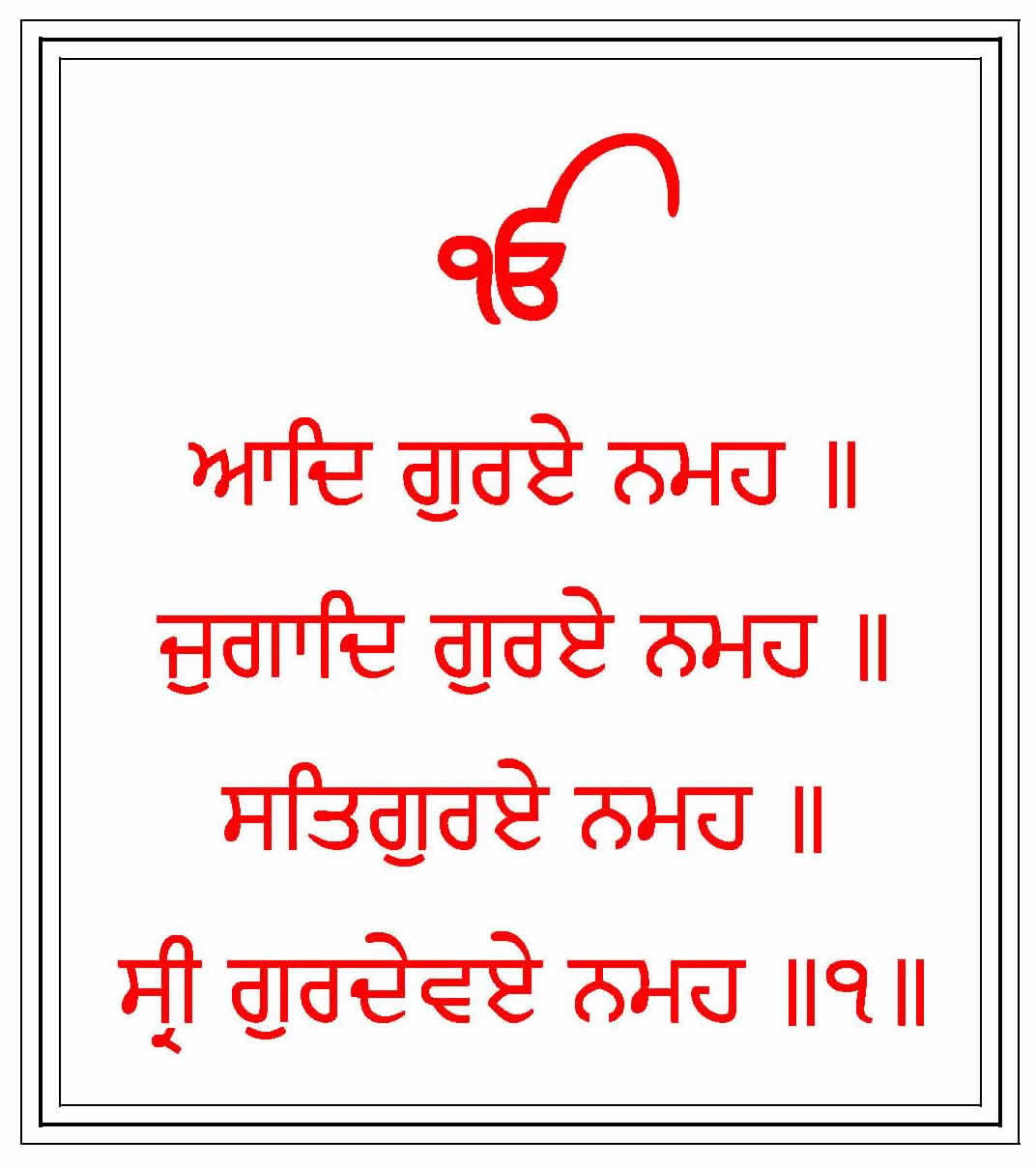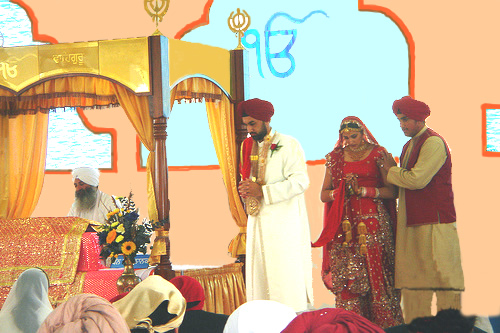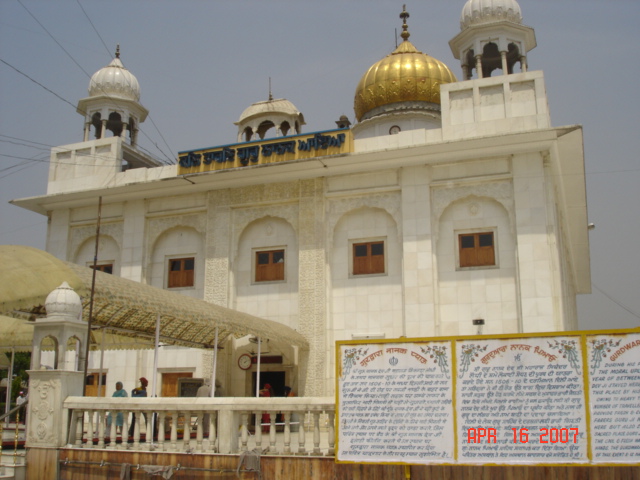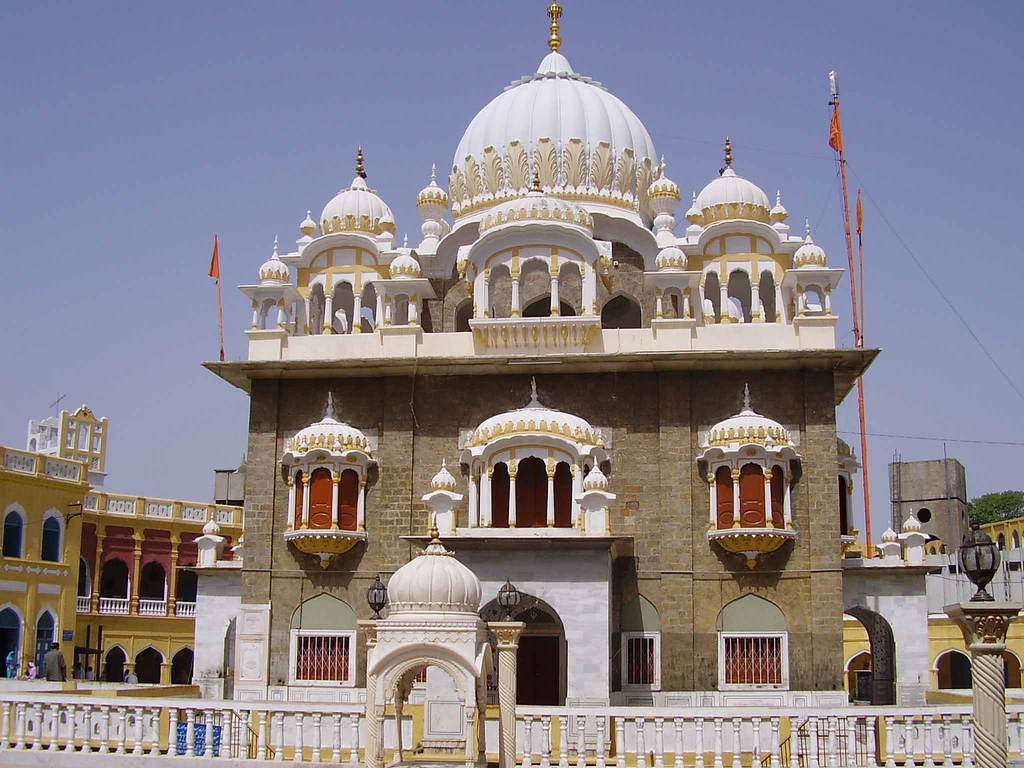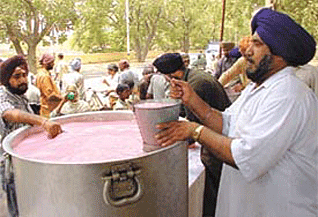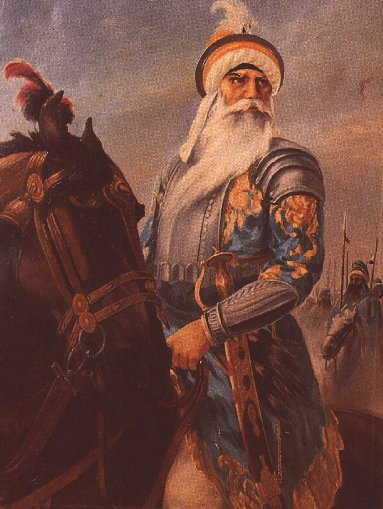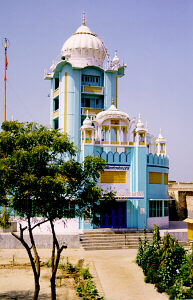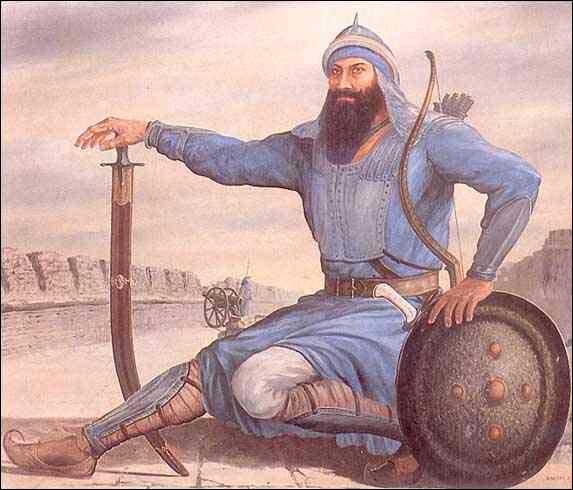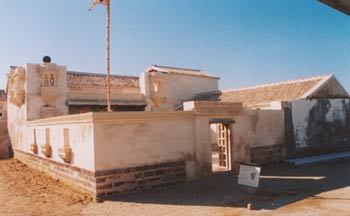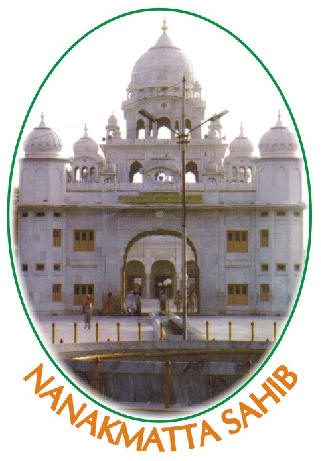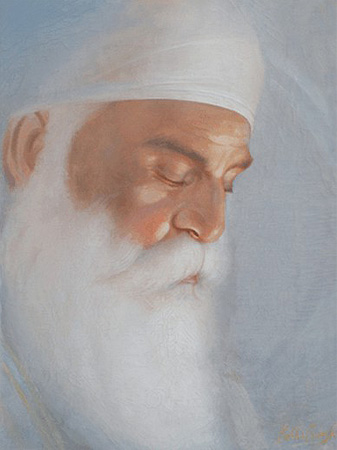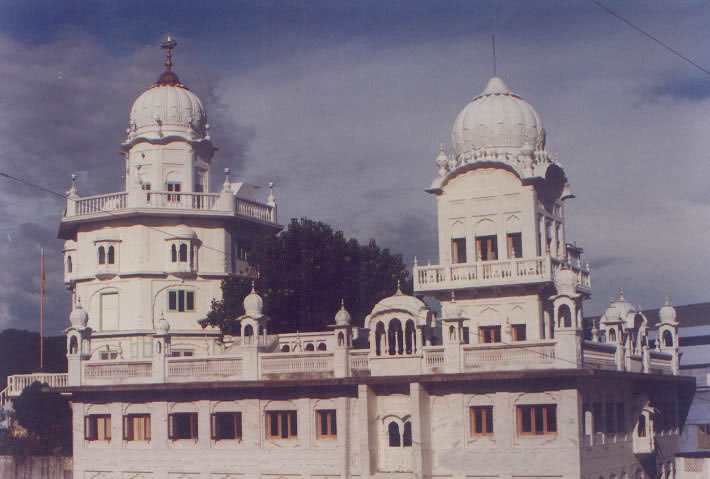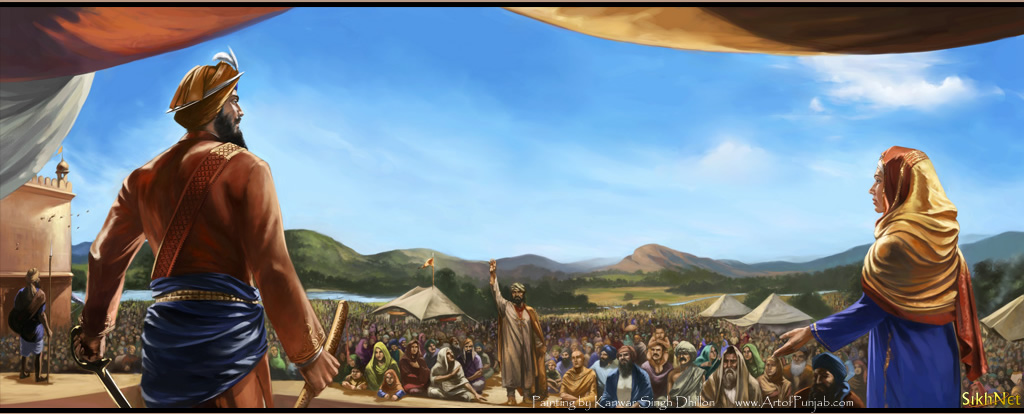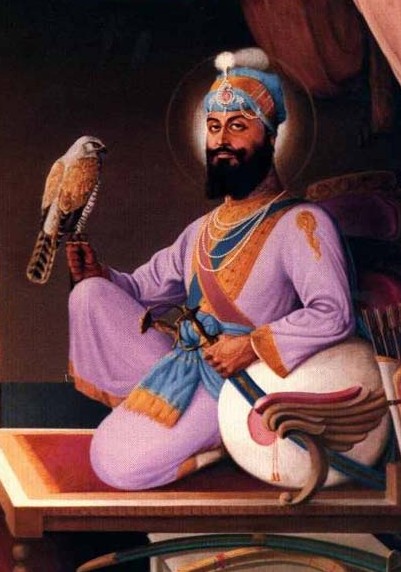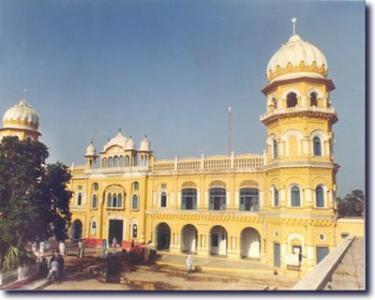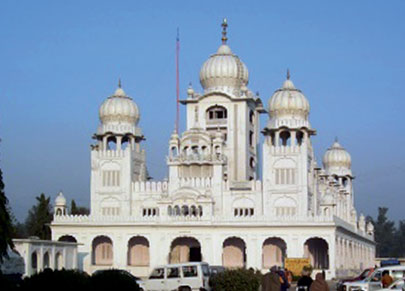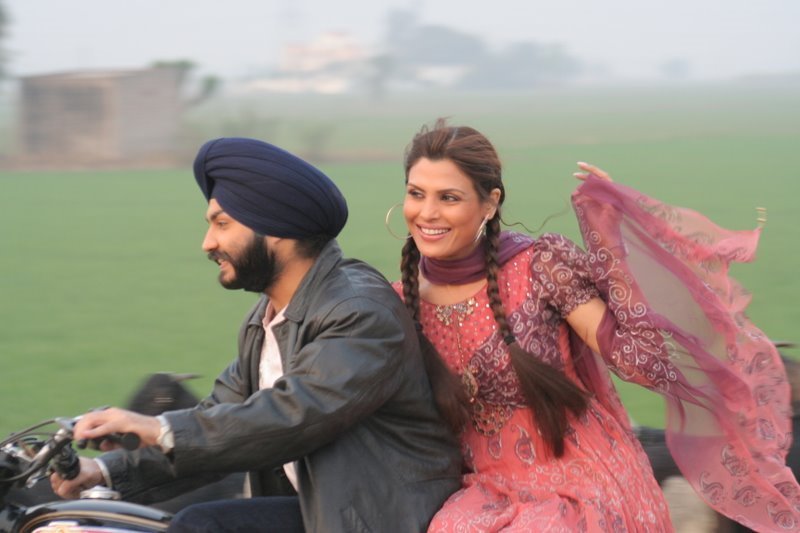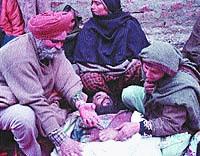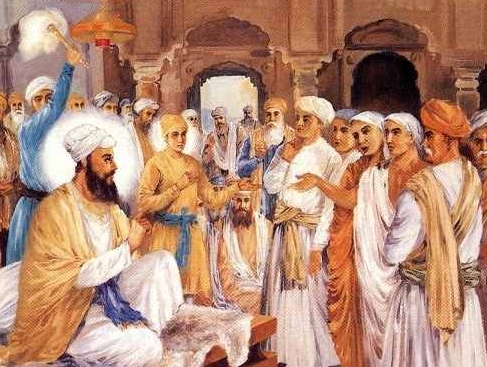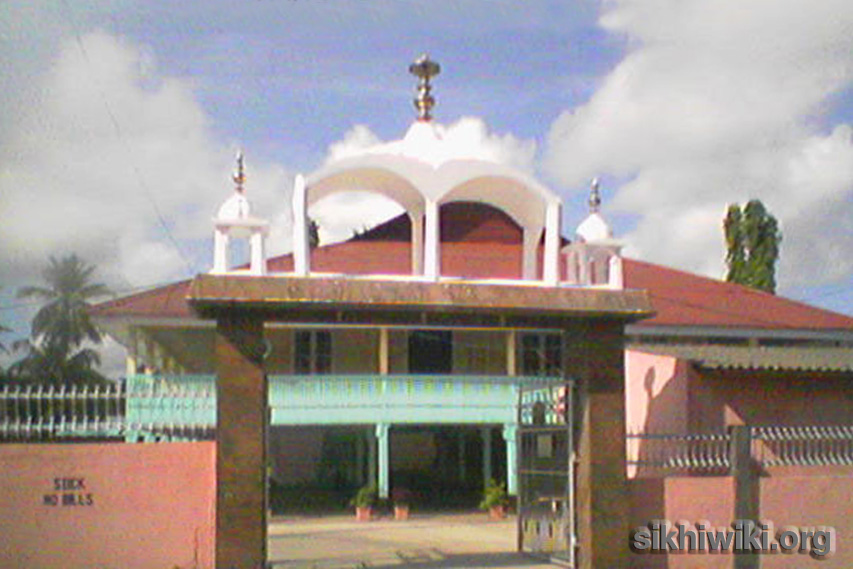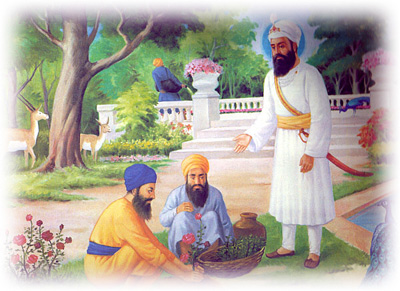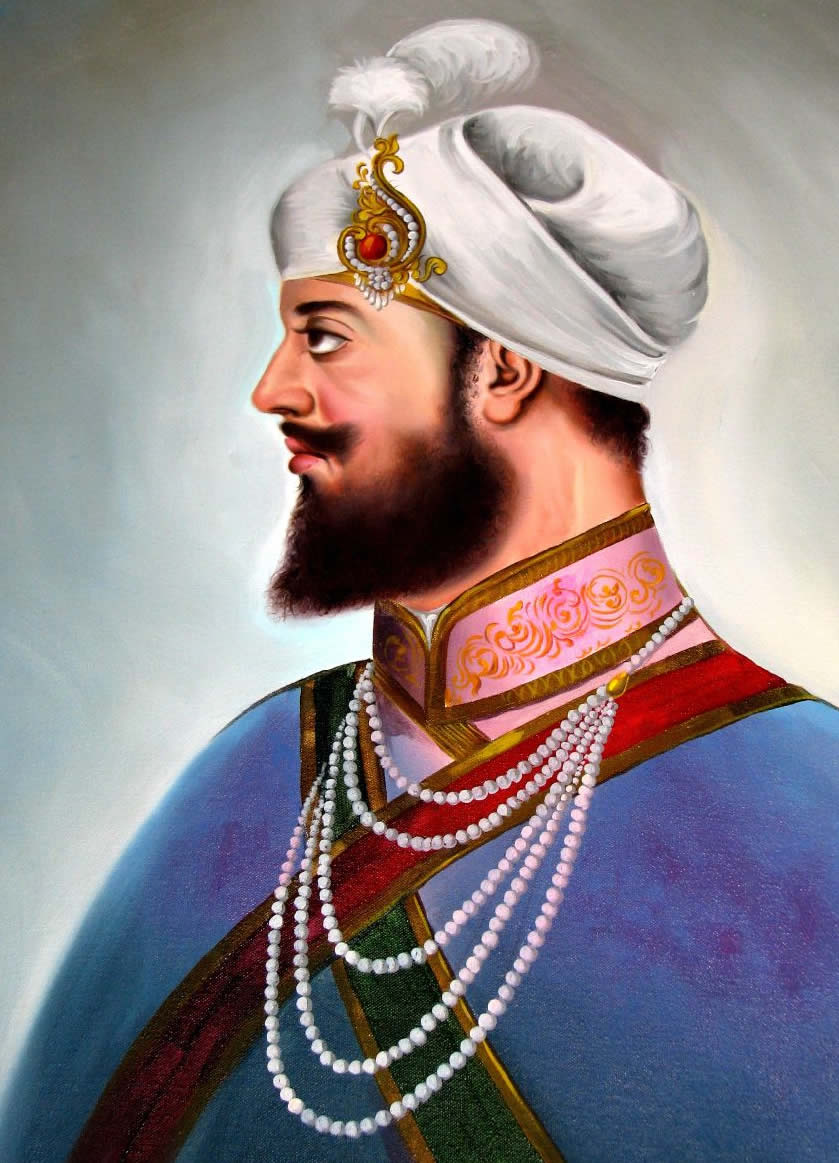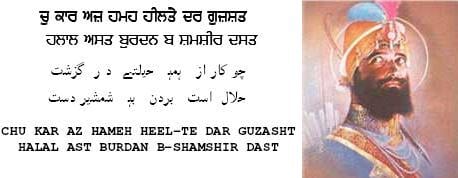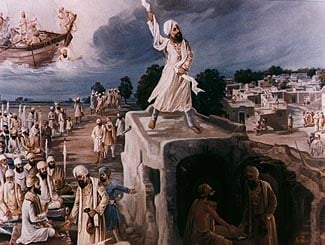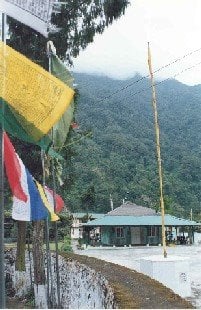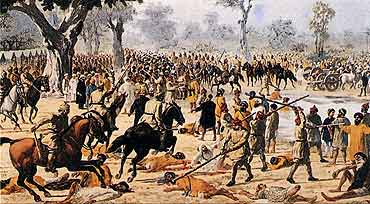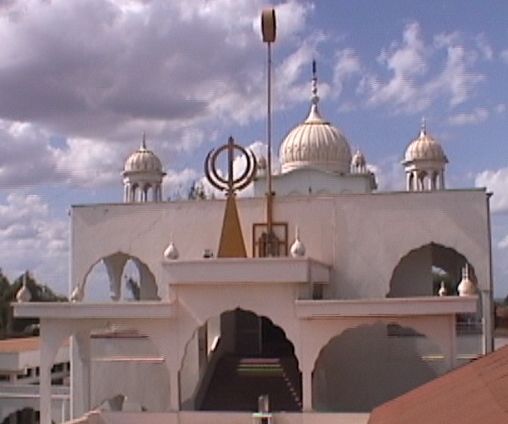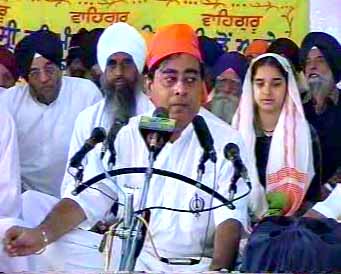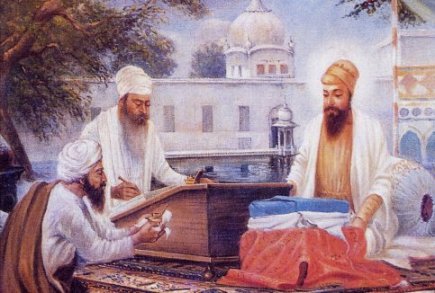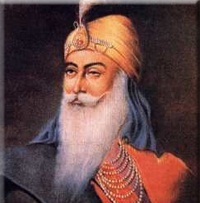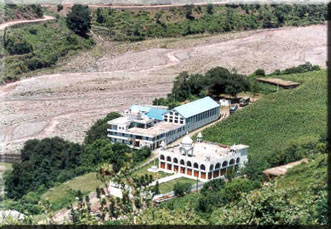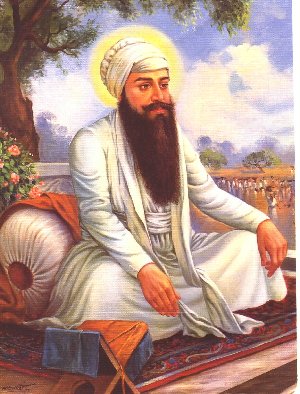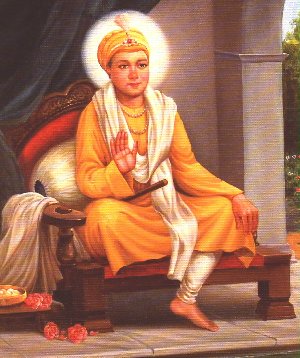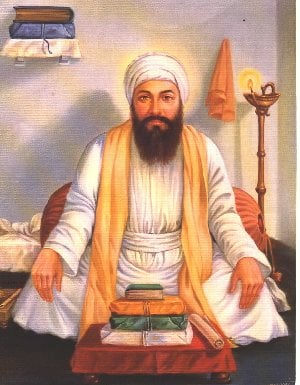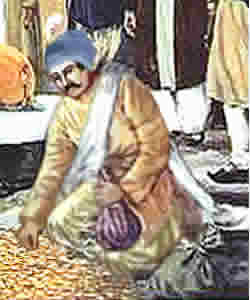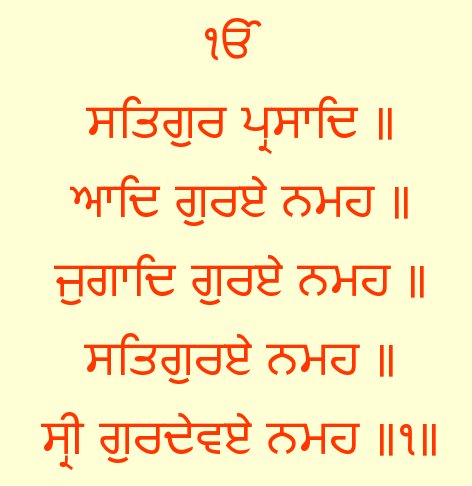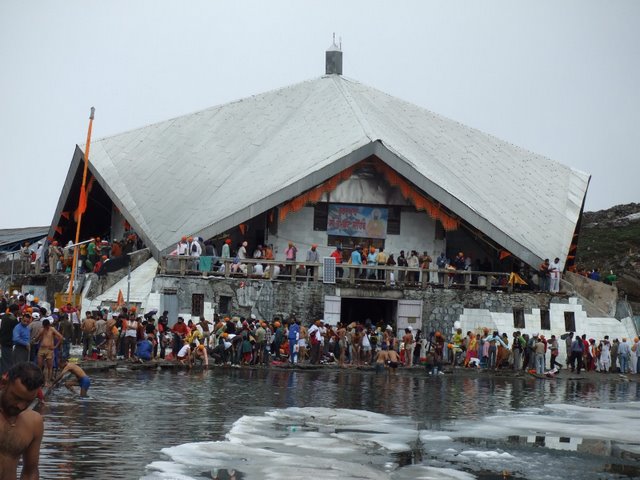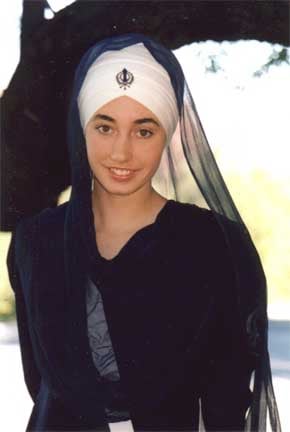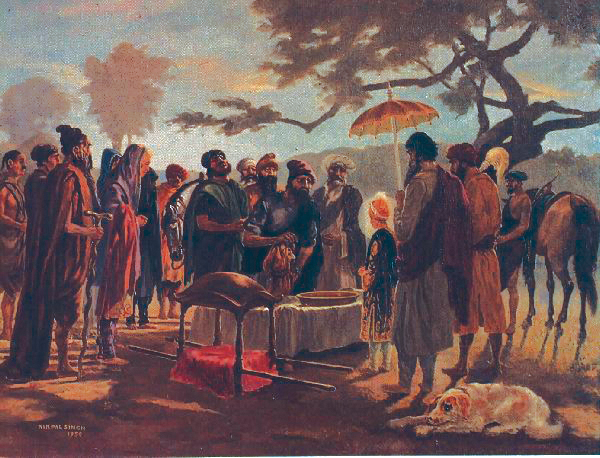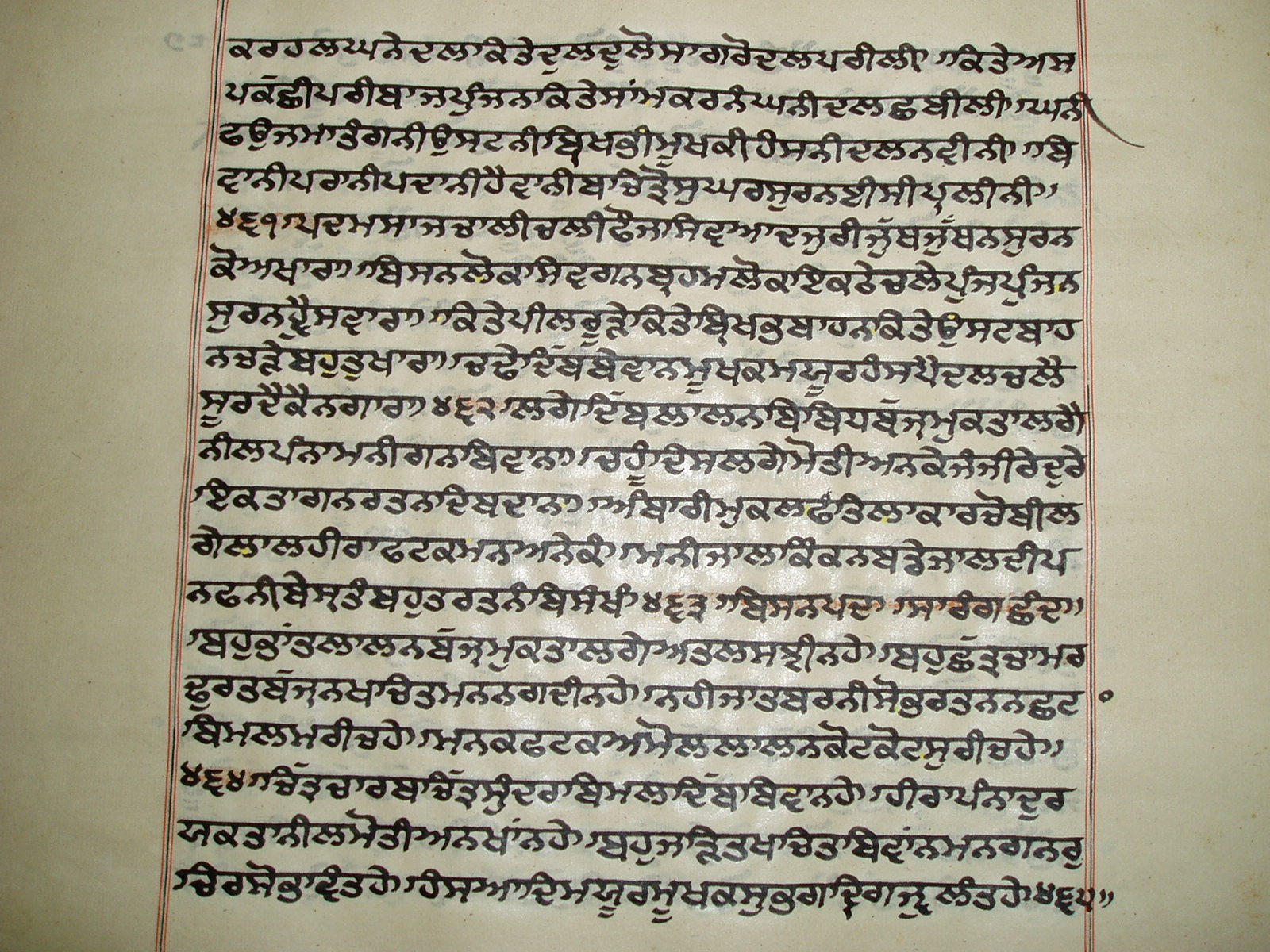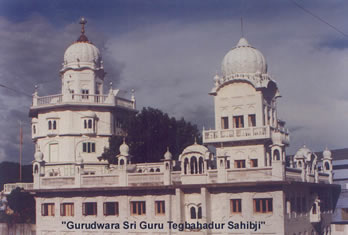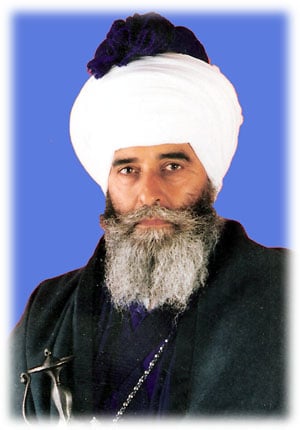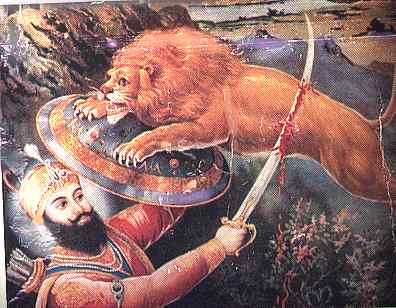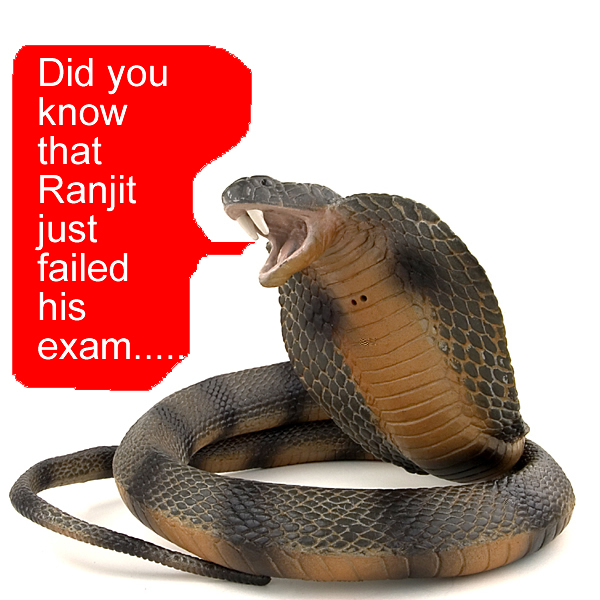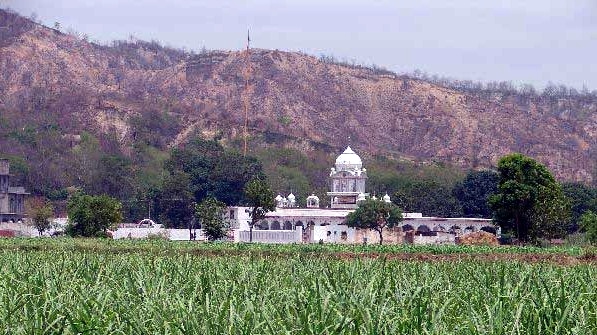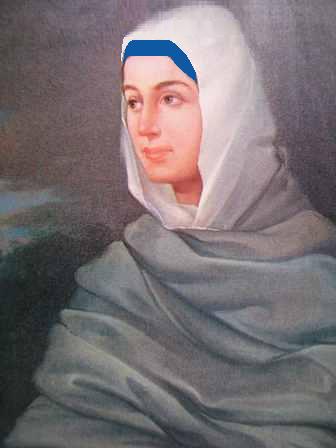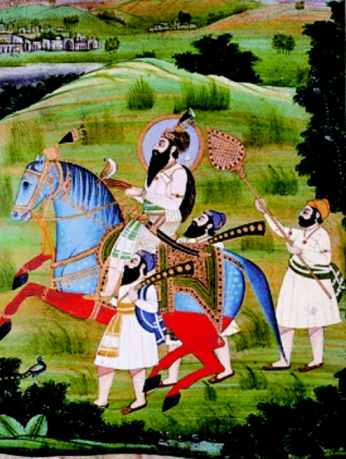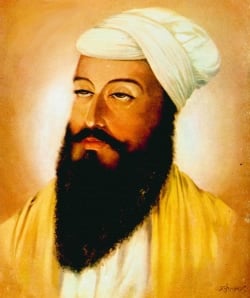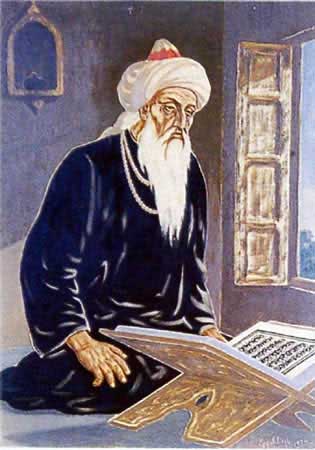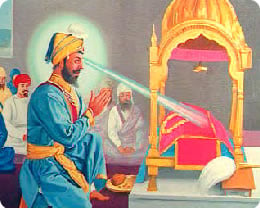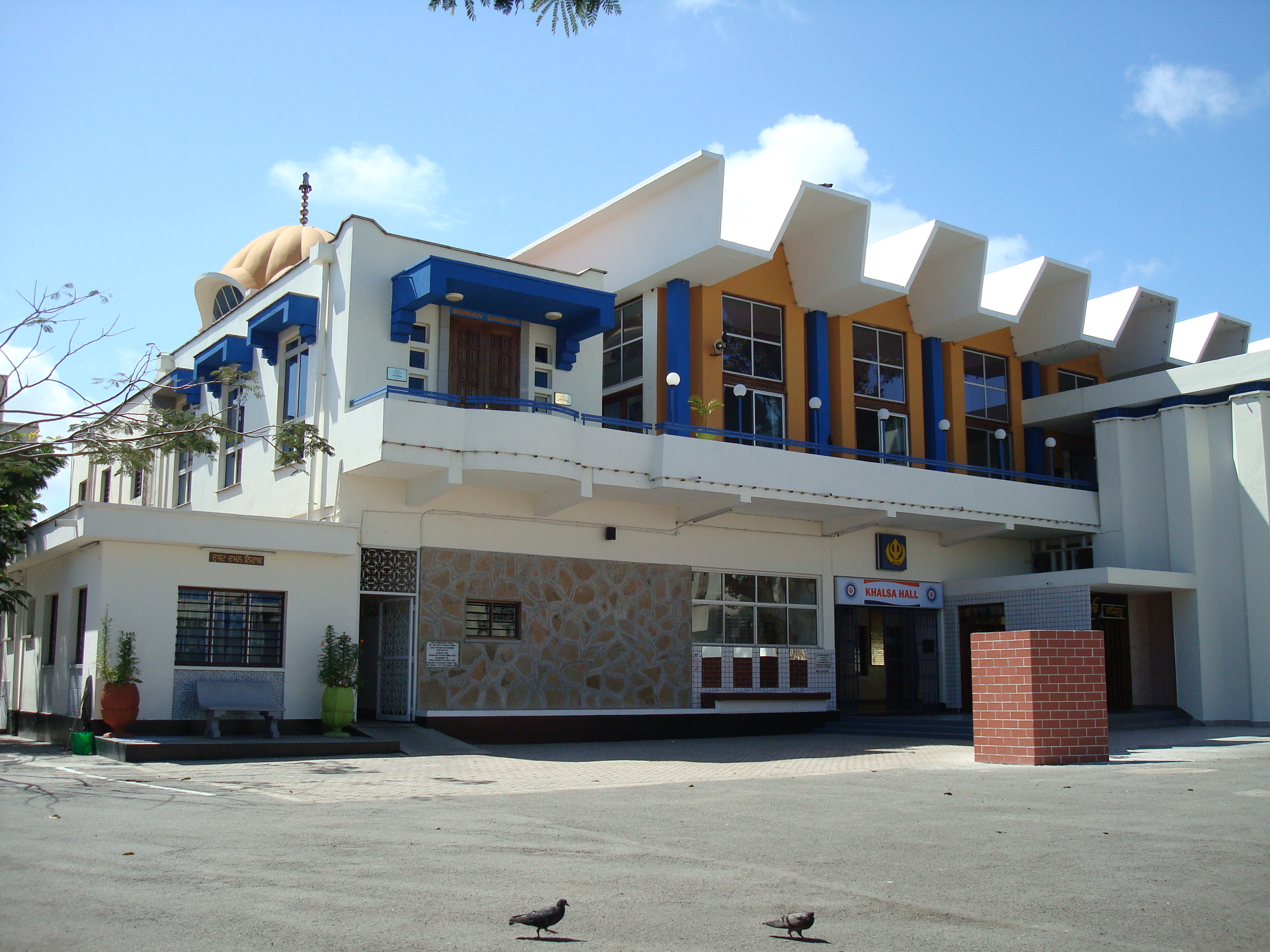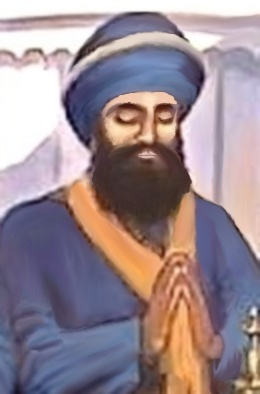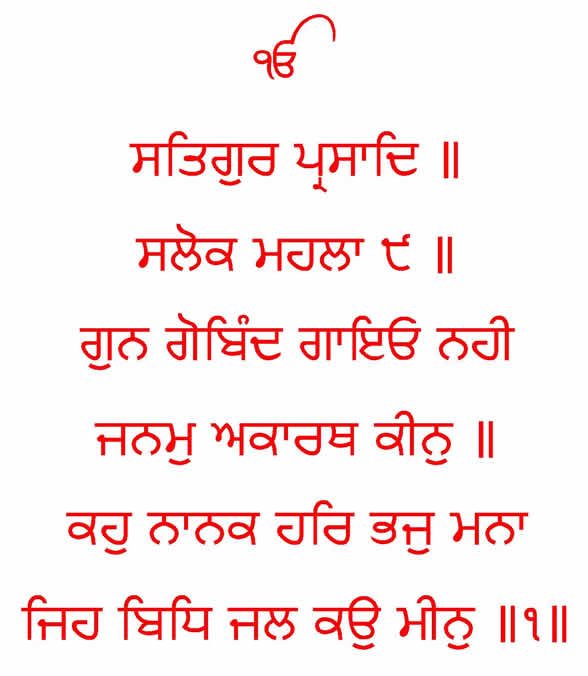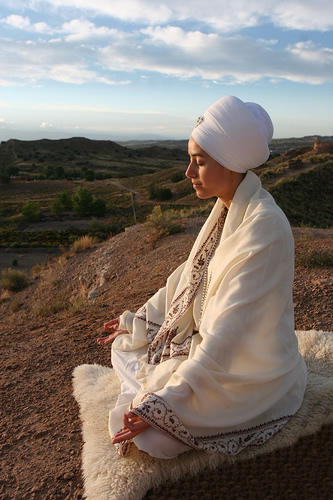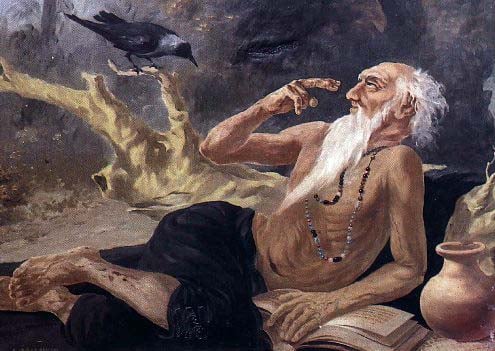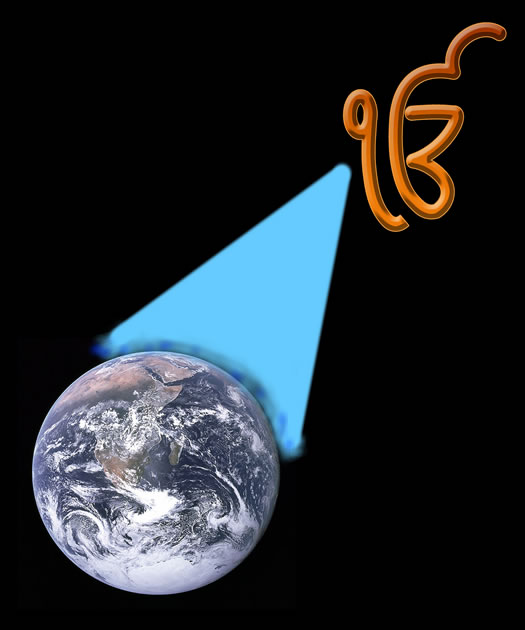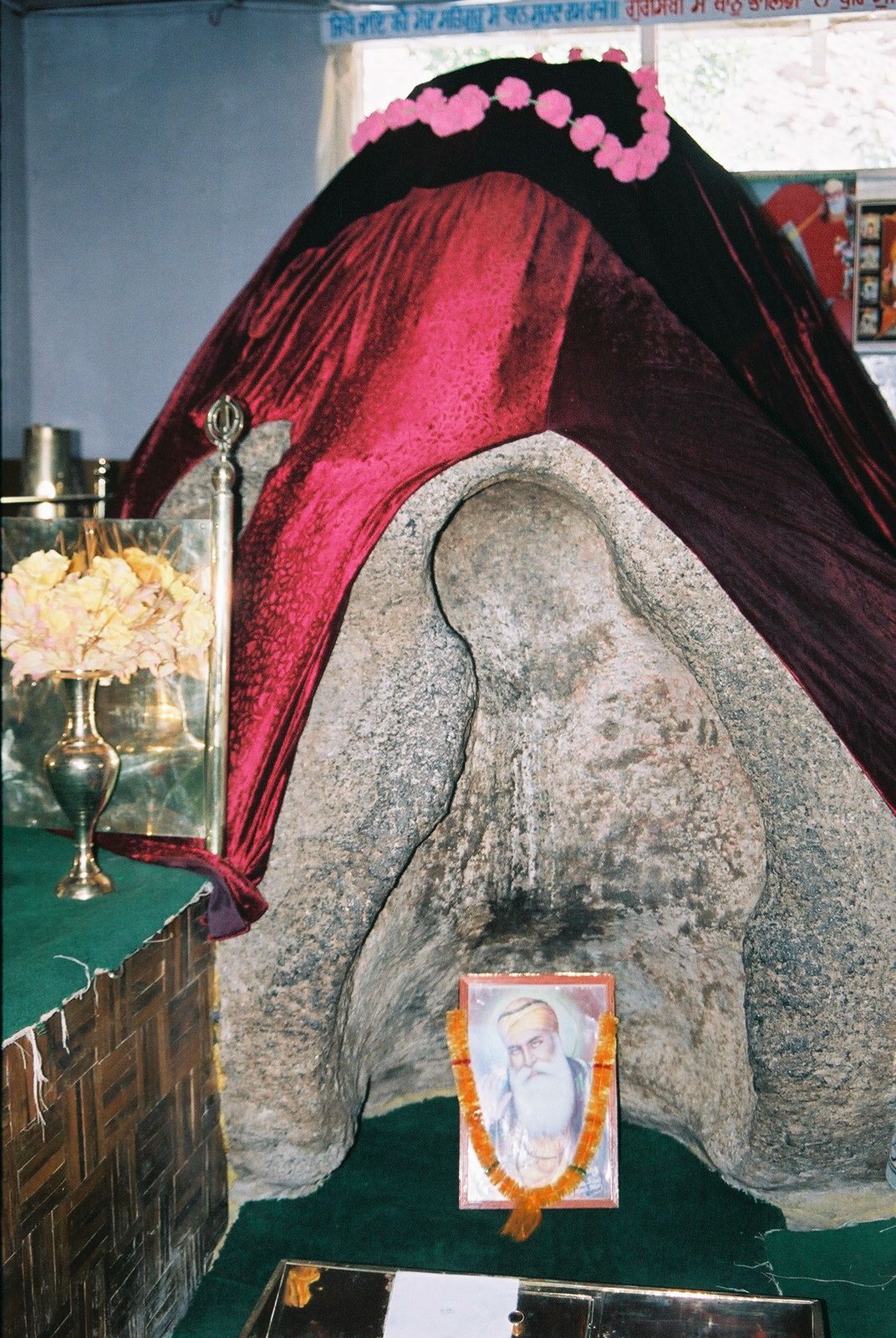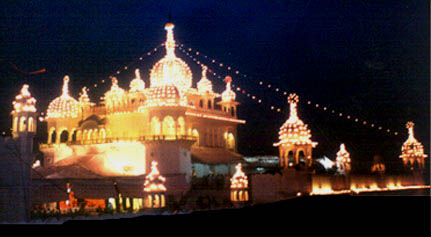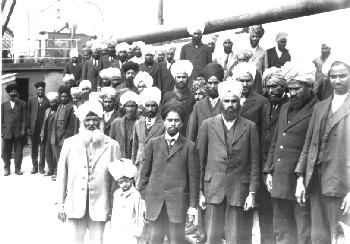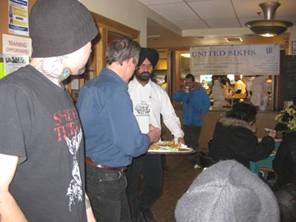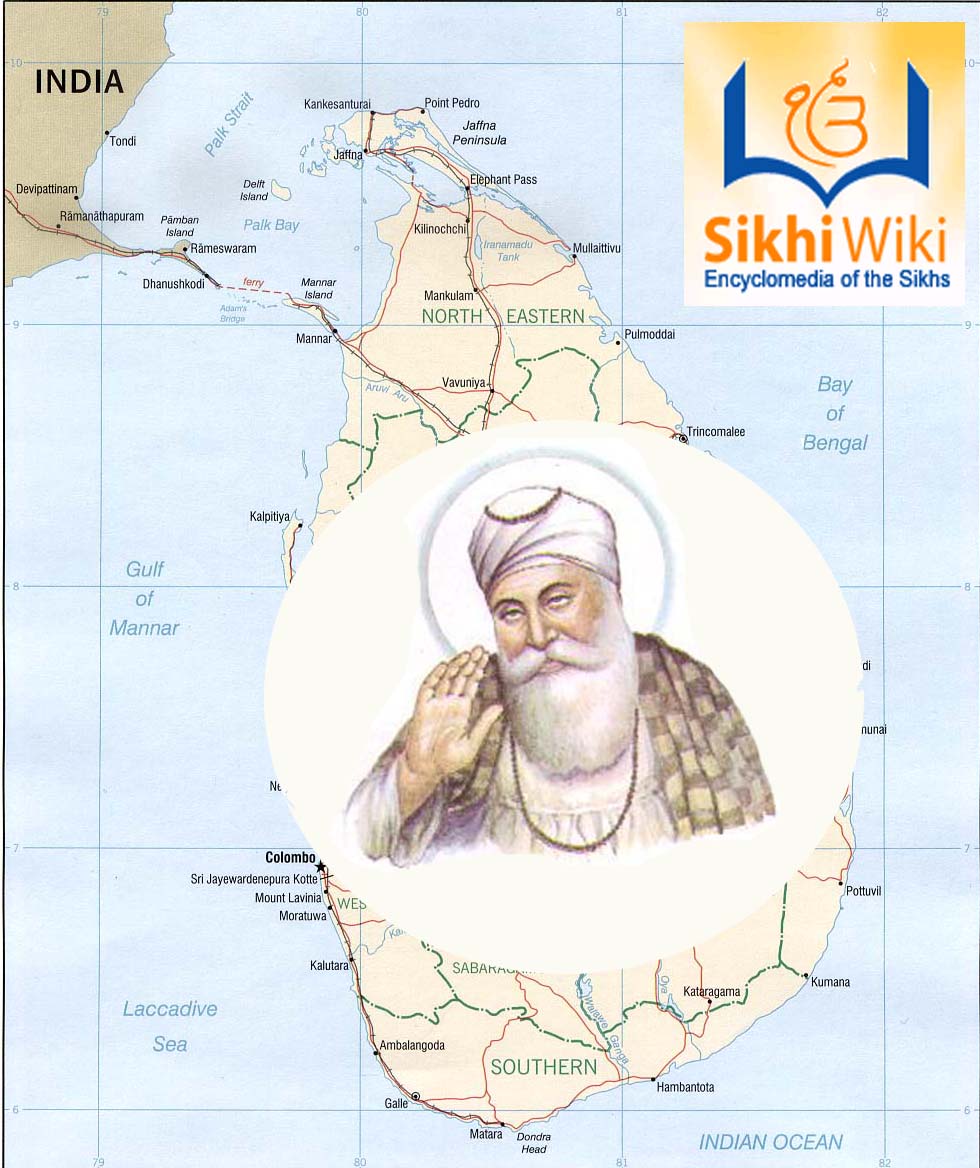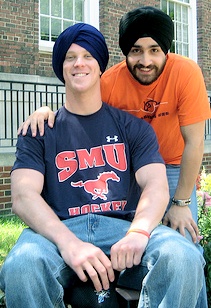AOW 100 to 199
Archived list of previously featured articles (AOW - Article of the Week) Original format - Full screen width.
- New Format - Half screen width - Archived Articles of the Week
- Proposed Featured Articles
- AOW 1 to 99
- AOW 200 to 299
- AOW 300 to 399
Contents: Top
100 101 102 103 104 105 106 107 108 109 110 111 112 113 114 115 116 117 118 119
120 121 122 123 124 125 126 127 128 129 130 131 132 133 134 135 136 137 138 139
140 141 142 143 144 145 146 147 148 149 150 151 152 153 154 155 156 157 158 159
160 161 162 163 164 165 166 167 168 169 170 171 172 173 174 175 176 177 178 179
180 181 182 183 184 185 186 187 188 189 190 191 192 193 194 195 196 197 198 199
- Select all the Pictures of the Week: ALL POW
- Select all the Guru's Messages: All Guru's Messages
- This is a list of all Article of the Weeks: AOW 100 to 199
100

Image courtesy of Buzzle
The Sikh faith condemns empty rituals and superstitions. The practice of blind rituals, worshipping of idols or inanimate objects, participating in religious fasts, pilgrimage to holy places, offering of food to sadhus (religious leaders), or believing in any such religious or other rites, superstitions or fads is rejected by Sikhism.
These pointless practises will not bring one closer to God or make one a better human being. In all societies round the world, through fear and uncertainty, members undertake in ritualistic and worthless behaviour at times of worry, uncertainty or trouble. These poor people, wrongly believe that undertaking these empty customs and penances will bring them special assistance from Waheguru or some other higher power.
Superstition is an irrational belief arising from ignorance or doubt. Many people all around the world are gripped by various superstitions and they live their lives in fear and uncertainty. Most of these fears are irrational and superfluous but they still cannot unbind themselves from these sometimes evil and false notions. Some common and well-known examples of superstitions are:
- "When a black cat crosses one's path, something will happen if one crosses the line where the cat passed. To "undo" either wait for someone who didn't know about the black cat to cross the path or think of another route." .....More
Contents: Top 100. 110. 120. 130. 140. 150. 160. 170. 180. 190.
101
Sukhmani or Sukhmani Sahib is the title given to the Gurbani in raga Gauri Sukhmani in the Guru Granth Sahib which in turn appears in the major musical measure Raga Gauri to which it belongs.
It is a lengthy masterpiece, written by Guru Arjan Dev, the fifth Sikh Guru. The sacred prayer spans 35 pages from page 262 to page 296 of the Guru Granth Sahib.
Surprisingly, many ardent Sikhs include the recitation of this Bani in their daily regimen of Nitnem.
The physical site where, around AD 1602-03, the Guru composed this Gurbani was once enclosed by a dense wood. The location is still marked on the bank of the Ramsar pool in the city of Amritsar, near the famous Golden Temple or Harimandir Sahib.
It is said that Baba Sri Chand, elder son of Guru Nanak and founder of the Udasi order, came to Amritsar to meet Guru Arjan, then engaged in composing this Bani. The Guru who had by that time completed sixteen astpadis, or cantos, requested him to continue the composition.
Baba Sri Chand, out of humility, only recited the salok of Guru Nanak following the Mool Mantra in the Japji .....More
Contents: Top 100. 110. 120. 130. 140. 150. 160. 170. 180. 190.
102
The laava (singular laav) are the four Shabads (sacred hymns) of the Anand Karaj (Sikh wedding ceremony). They form the central part of the marriage ceremony.
The "four rounds" ("char phaara") as they are sometimes called, form the main part of this auspicious occasion. The four Shabads that are central and form the key element of the Sikh marriage ceremony are from the Guru Granth Sahib, the Sikh holy scriptures and appear on pages 773 to 774 of the total of 1430 page of the holy Granth.
Guru Ram Das, the fourth Sikh Guru tells us on page 788 of the Sri Guru Granth Sahib about the meaning of marriage to a Sikh couple – Effectively, the Guru defines a Sikh marriage in these 2 lines:
"They are not said to be husband and wife who merely sit together. Rather they alone are called husband and wife, who have one soul in two bodies."
Thus the partnership of marriage is given a special meaning - a new dimension. For a union of marriage to be successful, the two personalities have to merge into one – a spiritual bonding through understanding and love.
The Guru through the four laava gives the Sikh couple further spiritual guidance for their life together; a journey together towards liberation and union with God. The Guru tell the Sikhs of the four golden rules of married life. These rules start very clearly to define the path to be threaded together in this sacred union. The Shabads inform us how the couple as a team has to .....More
Contents: Top 100. 110. 120. 130. 140. 150. 160. 170. 180. 190.
103
Gurdwara Nanak Piao is a historic Gurdwara located in north Delhi in India. This Gurdwara sahib is dedicated to the first Sikh Guru, Sri Guru Nanak Dev.
This Gurdwara was built at the site where Guru Nanak Dev camped, in the garden when he visited Delhi in 1505 during the reign of Sultan Sikander Shah Lodhi. It is situated on Rana Pratap Road (also known as Grand Trunk Road or GT Road).
It is said that people flocked to the revered prophet and offered him and Bhai Mardana precious gifts and offerings. Guru Nanak used to distribute all these offerings to the poor and needy.
Besides this, he used to offer food and water to the hungry and thirsty, hence the name of the shrine. The word "Piao" mean to "offer liquid to drink" and refers to the offering of water to all the thirsty who visited this shrine.
Even today, the well used by the Guru is preserved and one can still see the well from which Guru Nanak served water at the shrine. Consequently, over time Gurdwara Nanak Piao attained a status of a holy and revered historical shrine. .....More
Contents: Top 100. 110. 120. 130. 140. 150. 160. 170. 180. 190.
104
Gurdwara Panja Sahib is situated at Hasan Abdal, 48 km from Rawalpindi in Pakistan. This is one of the most holy places of Sikhism because it marks the spot where the founder of the faith, Guru Nanak Dev visited and instilled an important lesson for his adherents. Still visible is the sacred rock with the hand print of Guru Nanak.
Many thousands of faithful Sikhs from all over the globe visit this shrine every year. However, twice a year, during special celebrations, an enormous number of Sikh pilgrims attend this Gurdwara from every corner of the world. Special visas are allocated by the Pakistan government to cater for the increased demand.
Guru Nanak along with Bhai Mardana reached Hasan Abdal on Baisakh Samwat 1578 B.K. corresponding to 1521 A.D. in the summer season. Under a shady cool tree, Guru Nanak and Bhai Mardana started reciting Kirtan and their devotees gathered around. This annoyed Wali Qandhari but he was helpless. ....Continued.
Contents: Top 100. 110. 120. 130. 140. 150. 160. 170. 180. 190.
105
On June 16 every year, Sikhs worldwide celebrate - yeah, Celebrate! - the great sacrifice of Guru Arjan, their fifth Guru.
In 1601, after completing the construction of the beautiful Harimandir Sahib and then the successful compilation of the voluminous sacred Sikh Scripture called the Adi Granth in 1604, the Guru embarked on teaching the Sikhs his ultimate lesson.
In 1606, the Guru, by example, showed the Sikhs the way and the manner in which to die in the name and in the Hukam (will) of God. Guru ji was the first Sikh martyr ever and by this event, the Guru set a precedence and an example for the people of the world.
He demonstrated how one should lay down one's life without fear, with dignity, honour and how not to be intimidated by thugs and terrorists. ....More
Contents: Top 100. 110. 120. 130. 140. 150. 160. 170. 180. 190.
106
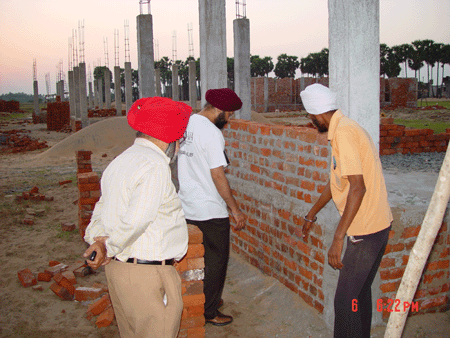
Seva is the essence of Sikhism. If there is one solitary word to sum up the Sikh religion, I would unhesitatingly pick seva as the operative word.
Seva is the voluntary service to fellow beings without any expectation of reciprocation. It is deeply ingrained in the collective psyche of the Sikhs.
Seva is what shines in Sikhism above all. I can say it without any exaggeration or the fear of contradiction that the extent of seva that is found among the Sikhs is rarely found in any other religion. The accent is upon the word, `Voluntary'. That makes the Sikhs unique.
It has often been seen in India that whenever there is any natural calamity on a large scale, the Sikh organizations are the first to reach there to provide succour to the affected people. After the devastating earth-quake in Katchh in the Gujarat State of India in 2001, the Sikhs had put up some of the biggest camps to provide free food to the quake-affected people. .....More
Contents: Top 100. 110. 120. 130. 140. 150. 160. 170. 180. 190.
107
Nawab Kapur Singh (1697-1753) is considered one of the most revered, pivotal and legendary figures in Sikh history post 1716.
Under his leadership decisions and courage, the then tiny Sikh community went through some of the darkest periods of its history.
The founding father of the Sikh Confederacy and Sikh Empire, he was also the founder of the Dal Khalsa.
Alongside Banda Bahadur who dominated the seen before him, he laid the foundations of the Sikh Empire and the eventual over-through of the vicious Mughal Empire. Today, he is regarded by Sikhs to be of equal importance to Banda Singh Bahadur.
The period, starting from the massacre (in 1716) in Delhi of Banda, his son, seven hundred of his devoted army members and thousands of Sikhs taken captive or beheaded along the march to Delhi, was followed by severe action against the Sikhs by the rulers, including massacres of young men, women and children. .....More
Contents: Top 100. 110. 120. 130. 140. 150. 160. 170. 180. 190.
108
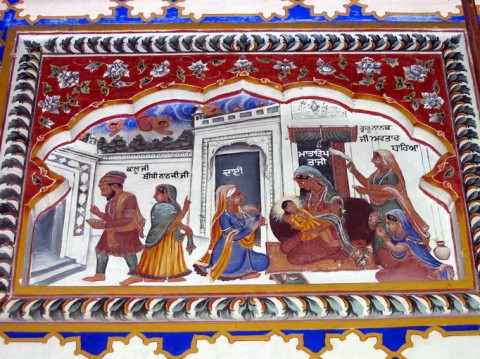
Mata Tripta was Guru Nanak's mother. The history of Sikh women has to start with her. She was the person who brought Guru Nanak, the founder of the Sikh religion into the world.
In the annals of world history, the greatness of Mata Tripta, deserves to be celebrated for bringing to the world a soul who offered much spiritual and moral guidance and a solid and creditable foundation for a new world religion.
Mata Tripta and her husband Mehta Kalu lived in Talwandi, Punjab, which is now part of Pakistan. Weary saints and 'fakirs' would take rest here, and Mata Tripta would welcomed and serve all these passers-by.
Their dedication for service of others was finally rewarded when Nanak was born in 1469. Thus, Mata Tripta was blessed with the honour of giving birth to God's messenger, Guru Nanak, whose mission was to redeem mankind.
No poet has ever been able to convey the ethereal beauty attained by Mata Tripta when she was expecting Nanak. Of the many prophets that have visited the earth, many of their mothers were unable to celebrate in the joy of rearing such wondrous offspring. For example; in Hinduism, Mata Devaki, the mother of Krishan, was unable to fulfil her maternal role as she languished in jail. She yearned for her child, and he too missed the love of his mother. .....More
Contents: Top 100. 110. 120. 130. 140. 150. 160. 170. 180. 190.
109

Most people in the west who wear the turban are Sikhs. All Sikhs, but particularly male Singhs are required to don the Dastaar due to the pronouncement in 1699 by the tenth Sikh master, Guru Gobind Singh.
"Dastaar", is the native Punjabi term used to refer to this headdress. Even 300 years on, it is in compliance to the Hukam (or order) of this supreme Sikh leader that all Sikhs today wear the dastaar. It is in honour and obedience to this one person!
The Sikh prime minister of India, Dr Manmohan Singh, displays his sky blue trademark turban out of respect for the Sikh Guru; the famous record breaking, 95-year-old marathon runner, Fauja Singh proudly wears his dastaar in honour of the tenth Sikh teacher; Bhagat Puran Singh the humble humanist and philanthropist used to don a simple turban in respect of the Sikh master. Why do the Sikhs go to all this trouble so many years after the diktat?
The dastaar comes in many different colours and styles and to the keen eye, each turban is different. Some are simple but regal; others may be bright and sporty; yet others may be stylish and extravagant – each one has it own special and unique statement. Every morning, most Sikh man and many Sikh women, spend some 5 to 20 minutes to comb their long hair and then carefully handicraft the link to their Gurus – a daily reminder of their heritage and its responsibilities. .....More
Contents: Top 100. 110. 120. 130. 140. 150. 160. 170. 180. 190.
110
Baba Gurditta (1613-1638), was the eldest son of the sixth Sikh Guru, Guru Hargobind. He was born on 15 November 1613 to Mata Damodari at Daroli Bhai, District Firozpur in Punjab, India. He was also an elder brother of Guru Tegh Bahadur, the ninth Sikh Guru and the father of Guru Har Rai and Dhir Mall. He was married to Mata Nihal Kaur. He had his training in religious lore and in the martial arts under the supervision of his father.
A beautiful Gurdwara stands at this site called Gurdwara Daroli Bhai, Dist. Firozpur. This Gurdwara marks the birthplace of Baba Gurditta, who was a great saint. The family of Guru Hargobind's wife Mata Damodari still live here and are custodians of some rare personal belongings of the sixth Sikh Guru, Guru Hargobind as well as a handwritten copy of Sri Guru Granth Sahib bearing the personal seal of Guru Gobind Singh. Similarly there is also an another Gurudwara at Anandpur Sahib of Baba Gurdita on a small hill nearby.
He was married on 17 April 1621 to Ananti alias Natti, daughter of Bhai Rama of Batala, an ancient town in Gurdaspur district. According to "Gurbilds Chhevm Pdtshdhi", relations from Darauli, Mandiali, Goindval and Khadur Sahib accompanied the marriage party. .....More
Contents: Top 100. 110. 120. 130. 140. 150. 160. 170. 180. 190.
111
Baba Banda Singh Bahadur (16 October, 1670 - 9 June, 1716) (Lachhman Dev alias Madho dass Bairagi), originally from the Jammu region, is revered as one of the greatest Sikh warriors as well as a most hallowed martyrs of the Khalsa Army.
The Khalsa were engaged in a prolonged fight against the cruel Mughals, who were practising their tyranny and mass terrorism on the general public.
His confrontation with the Mughal administration in Northern India, though brief, was strong and extremely vigorous, enough to shake the foundations of this evil empire.
The agrarian uprising that he led in the Punjab was the underpinning on which the Dal Khalsa, the Sikh Misls and Maharaja Ranjit Singh built the edifice which finally culminated with Ranjit Singh capturing Lahore in 1799 and establishing the Sikh Kingdom in the Punjab and finally the defeat of the cruel Mughal empire. This resulted in the end of a dark period in the history of India. .....More
Contents: Top 100. 110. 120. 130. 140. 150. 160. 170. 180. 190.
112
Gurdwara Pehli Patshahi meaning the "Gurdwara of the first master" is situated at Lakhpat, Gujarat, India - A town in Gujarat, visited by Guru Nanak sahib during his second and fourth missionary journeys (Udasis) in 1506-1513 AD and 1519-1521 AD respectively.
"Gurdwara Guru Nanak Sahib" has been built to preserve the memory of these visits of revered Guru during the early 1500s. Guru Nanak is believed to have visited this site while he was on his way to Mecca during the Fourth Udasi. A few of his rare personal possessions are retained here.
In the course of Guru Nanak Dev ji's travels, he visited Gujarat and traveled onto Lakhpat. In those days, Lakhpat was part of Sind, which today is now part of Pakistan). Lakhpat is 170 kms from Gandhidham, Gujarat, India.
In the sixteenth century Lakhpat was known as "Basta Bandar". Lakhpat was then a rich rice growing area and was also a popular port along the river, but an earthquake in 1819 led to the area became barren and crops withered away due to a lack of water as the as the age old irrigation system failed when the riverbed shifted as a result of the earthquake. .....More
Contents: Top 100. 110. 120. 130. 140. 150. 160. 170. 180. 190.
113
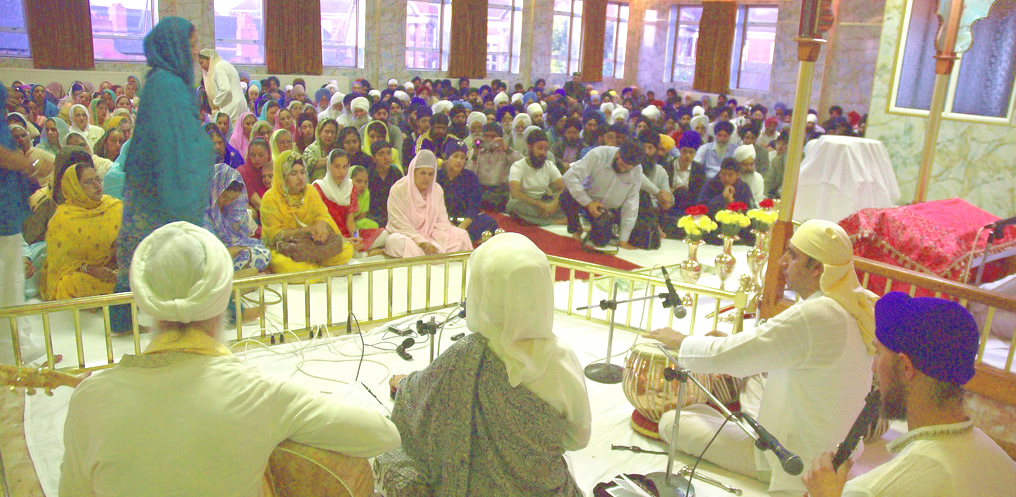
"Sangat" is congregation. "Sadh" is saint. "Sat" is true.
All these three words refer to a gathering of, or a meeting with, God-oriented people. The group may come together to say prayers to God, sing kirtan, listen to kathas or discuss spirituality and religious matters. They may meet in a Gurdwara, the Sikh place of worship, or at home, or anywhere else.
Most commonly, a sangat gather in the presence of the Guru Granth Sahib - the Sikh holy book. Wherever people gather to sing the praise of the Lord, or to talk about Him, they are referred to as "Sat Sangat" or "Sadh Sangat" – "holy gathering". While the word Sangat can refer to any gathering, but within the field of a religious faith, it refers to a true, wise or holy gathering.
Man is known by the company (or sangat) that he keeps. Man is the result of his environment. Bhagat Kabir says: "ਜੋ ਜੈਸੀ ਸੰਗਤਿ ਮਿਲੈ ਸੋ ਤੈਸੋ ਫਲੁ ਖਾਇ ॥ Jo jaisī sangaṯ milai so ṯaiso fal kẖā▫e. According to the company one keeps, so are the fruits that one eats" (SGGS p 1369).
So the company that one keeps is a great force and it plays a big role in shaping the person. Those who live in the company of thieves, robbers and evil persons, acquire evil ways of life and are bound to become thieves, robbers and the like, but those who keep the company of saintly people are shaped in the saintly mould and destined to follow the path of spirituality. .....More
Contents: Top 100. 110. 120. 130. 140. 150. 160. 170. 180. 190.
114
Gurdwara Nanak Mata is a historical Sikh shrine in a town also named Nanak Mata (often pronounced Matta) in district Udham Singh Nagar, Uttarakhand in northern India.
Uttarakhand state borders Tibet to the north, Nepal to the east, and the states of Himachal Pradesh and Uttar Pradesh to the west and south respectively. The provisional capital of Uttarakhand is Dehradun which is also a rail-head and the largest city in the region.
The town is associated with Guru Nanak Dev and Guru Hargobind. It is situated on the bank of Deoha stream, which has since been dammed into a reservoir named Nanak Sagar.
The Gurdwara is located 15 kilometres west of Khatima Railway Station on the Pilibhit-Tanakpur metre-gauge section of North-Eastern Railway. The holy shrine is near the town of Sitarganj.
Gurdwara Sri Nanak Mata Sahib is associated with the first Guru, Guru Nanak Dev ji who went there during his third Udasi in 1514 A.D. At that time, Gurdwara Sri Nanak Mata Sahib was the abode of the devotees of Guru Gorakhnath and it was called "Gorakhmata". .....More
Contents: Top 100. 110. 120. 130. 140. 150. 160. 170. 180. 190.
115
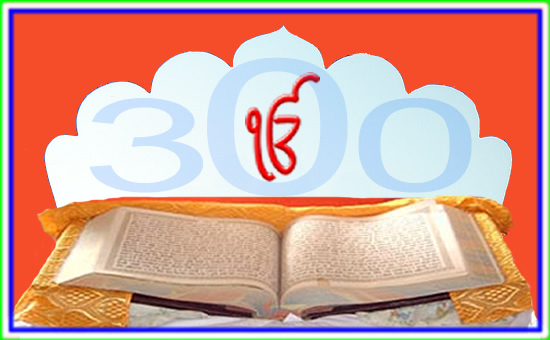
On 15 November 2007 at 4.30pm IST (Indian standard time) (11 am GMT and 6am EST-USA;) the Takhat Sachkhand Sri Hazoor Sahib Gurdwara will begin the countdown to the 300th year of guruship of Guru Granth Sahib in October 2008. To mark this occasion, the Gurdwara is asking all Sikhs to recite the Mool Mantar for 15 minutes at this time. The organisers have stated that: "MEDITATE, PARTICIPATE, CELEBRATE: Over 15 million Sikhs across the world will celebrate Simran Divas. An auspicious occasion that will flag off the year long celebrations marking 300 years of "GURTA GADDI' at Nanded in October,2008. Share your love and devotion by reciting the "Mool Mantar" wherever you may be. Let us meditate, participate, celebrate together 300 saal guru dey naal"
The tercentenary celebration of the Guruship of Sri Guru Granth Sahib is to be undertaken on a massive scale towards the end of next year at Takhat Sachkhand Shri Hazur Abchalnagar Sahib in Nanded, Maharashtra, India. The historic town of Nanded is an important place in Sikhi because it is where Takht Sri Hazur Sahib, one of the five temporal thrones or seats of authority (Takhats) is located. This is where Guru Gobind Singh, the Tenth Teacher, is known to have meditated on the banks of river Godavari and where he spent his final days. .....More
Contents: Top 100. 110. 120. 130. 140. 150. 160. 170. 180. 190.
116
Every year in November, many millions of spiritually inclined people around the planet will celebrate the birth anniversary of the most widely respected of saints in the world, Baba Nanak.
Baba ji was born in 1469 and brought a universal message of peace, love, unity, mutual respect, service and dedication to all of humankind.
He turned people from violence to peace; he converted tyrants into compassionate beings; and he changed painful societies' into blissful communities. People of all faiths listened to his message and all gained from his wise and sacred words.
Out of respect for his wisdom and fascination for his beautiful poetry, many thousands of followers heeded his words and changed their way of life.
Today in these violent and turbulent times, many millions continue to gain from his spiritual insight and lead a tranquil and peaceful existence treading on the path that he established – his teaching enshrined in the Guru Granth Sahib are a beacon to many millions in the world.
He never asked anyone to change their religion; all he said was "If you desire eternal bliss, O Nanak, always remember the Lord in meditation" (p714). He asked all to mend their ways, to remember God and do good deeds. .....More
Contents: Top 100. 110. 120. 130. 140. 150. 160. 170. 180. 190.
117
Gurdwara Sri Guru Tegh Bahadur Sahib - This famous Gurudwara is situated in the heart of the Dhubri Town on the bank of the mighty Brahmaputra river in far north-west India.
Guru Nanak the first Sikh Guru visited this place in 1505 and met Srimanta Sankardeva (the founder of the Mahapuruxiya Dharma) as the Guru travelled from Dhaka to Assam.
This historic shrine, Sri Gurdwara Guru Tegh Bahadur or Damdama Sahib at Dhubri in Assam was built in memory of the visit of Guru Nanak. Hence it has great importance for Sikh community. Guru Tegh Bahadur established this Gurdwara during his 17th century visit to the area.
Sikh devotees from all over India and the world assemble in this Gurdwara every year in the month of December to mark the martyrdom of Guru Tegh Bahadur with due solemnity and ceremony. Sikh devotees call this festival Sahidee Guru Parav.
It was during his stay in Dhubri, that the ninth Guru received the news that a son was born to him at Patna. .....More
Contents: Top 100. 110. 120. 130. 140. 150. 160. 170. 180. 190.
118
Several months before March 1699, Guru Gobind Singh invited his followers from all over India to a special congregation at Anandpur on Vaisakhi Day, 30 March 1699. As a result, on that particular day many hundreds of devotees and onlookers had gathered at Anandpur Sahib.
Many had come as a sign of respect for the Guru and in accordance to his invitation while some had just come out of curiosity. On the appointed day, the Guru addressed the congregates with a most stirring oration on his divine mission of restoring their faith and preserving Dharam (righteousness).
After his inspirational discourse, he flashed his unsheathed sword and said that every great deed was preceded by equally great sacrifice. He asked, with a naked sword in his hand, "Is there any one among you who is prepared to die for their faith?" When people heard his call, they were taken aback. Some of the wavering followers started to leave the congregation, while other began to look at one another in amazement. .....More
Contents: Top 100. 110. 120. 130. 140. 150. 160. 170. 180. 190.
119

photo courtesy bbc
On February 5, 2008, at a preliminary hearing, a UK judge Sir Michael Harrison in Court 18 at the Royal Court of Justice in London decided not to allow a Sikh girl, Sarika Watkins-Singh to wear her Kara to school.
The Kara is one of the five articles of faith which is worn by all practising Sikhs. The decision was made before the case was heard at a full hearing several months later.
Fortunately, when the case was heard at a full trial by Mr Justice Silber, over 3 days from 17 June, 2008, he sided with the Sikh girl.
The deputy High Court judge decision at the first hearing was surprising as in 1983 the House of Lords, the supreme court in the UK decided that a school had violated the rights of a student, Gurinder Singh Mandla when he was not allowed to join the school because of his turban which he used to cover his kesh (uncut hair); one of the 5ks or Articles of faith. (see the full judgement Mandla v Dowell Lee).
In what appears an unbelievable statement, the deputy judge ruled: "Whilst I accept there will be detriment to the claimant (Sarika) if she is not able to wear the Kara in the interim, it does not seem to me that is anything like as significant as the detriment to the school if she were allowed to wear it."
This surprised a lot of Sikhs as it appears to encourage other organisations to freely discriminate and break the law as the "detriment to the claimant" may be less significant than to the opposite party. .....More
Contents: Top 100. 110. 120. 130. 140. 150. 160. 170. 180. 190.
120
In the last month from 6 November to 6 December 2007, over 72,000 visits were made to SikhiWiki. That is a record!! Click on the adjacent picture to see the exact details. Are you included in the figure of 72,008?
Are all your friends connecting with Sikhi through this site. If not, why not! Tell your friends about this site and let them also learn about Sikhi. We believe that this is the most comprehensive site for learning about Sikhism and the Sikhs - It is free to access and new items are added every day. .....More
Contents: Top 100. 110. 120. 130. 140. 150. 160. 170. 180. 190.
121
On June 11 every year the Sikhs celebrate the Gurgadi day of their sixth Master, Guru Har Gobind (5 July 1595 - 19 March 1644).
The Guru sahib was born at village Guru Ki Wadali in district Amritsar, Punjab, India on 5 July 1595 and was the only son of Mata Ganga and Guru Arjan, whom he succeeded on 11 June 1606 at the age of only 11 years old.
The young Hargobind received his early education and training from the revered Sikh leaders of the time Baba Buddha, the first Sikh "granthi" and Bhai Gurdas, the scribe of the Sikh holy script, Guru Granth Sahib.
Guru Hargobind was married in about 1610 to Mata Nanaki also known as Mata Marwahi or Mata Mahadevi. They were endowed with a large family consisting of one daughter Bibi Viro and five sons: Baba Gurditta, Suraj Mal ji, Ani Rai ji, Atal Rai ji and Tegh Bahadar ji. Guru Hargobind was responsible for wearing two kirpans - one for Miri (temporal protection) and one for Piri (spiritual elevation) and began the rapid and irreversible militarization of the Sikh people. It was due to the tragic martyrdom of his father, Guru Arjan that the sixth Guru changed the Panth (the global Sikh community) into an effective, brave and determined army of religious supporters of righteousness (Dharam).
The Guru also built the Akal Takhat in 1608 - which is now one of five takhats (seats of power) of the Sikhs and is the place from where worldwide direction is given to the Sikh community on global issues. Guru sahib also founded the city of Kiratpur in District Rupnagar, Punjab. .....More
Contents: Top 100. 110. 120. 130. 140. 150. 160. 170. 180. 190.
122
On February 21, the Sikh sangat worldwide will remember the sacrifices made during Saka Nankana Sahib. This event forms a very important part of Sikh history.
In political significance, it comes next only to Jallianwala Bagh massacre of April 1919. The saka (demonstration or agitation) constitutes the core of the Gurdwara Reform Movement started by the Sikhs in early twentieth century. The interesting part of this saka is the unprecedented discipline, self-control and exemplary patience displayed by the peaceful Sikh protesters even in the face of extreme barbarism.
Even the national leaders like Mahatama Gandhi had to acknowledge in no ambiguous terms the glory and the prestige which the peaceful and passive resistance of the Sikhs had brought to the India's struggle for freedom.
In October 1920 A.D., a large meeting was held at Dharowal, District Sheikhupura for the reform of Gurdwara Nankana Sahib. At this meeting, the leaders of the event revealed to the large gathering of Sangat, that great misdeeds were being committed inside the Gurdwara by the Mahant who was managing the holy shrine.
Gurdwara Nankana Sahib was highly revered as it was the birth place of Guru Nanak; a city named Nankana Sahib grew up around the Gurdwara which is now in Pakistan. At meeting, it was unanimously resolved that the Mahant be asked to mend his ways. .....More
Contents: Top 100. 110. 120. 130. 140. 150. 160. 170. 180. 190.
123
12 O'clock Joke: For all of you who thought of the '12 o Clock joke' as a slam against Sardars, just read the following story.
I was standing at railway Station (New Delhi) when my attention went towards a Sikh youth standing near me wearing a black turban having a long beard and wearing a kirpan over his shirt looking similar to what some people might think of as a terrorist.
After a while, one local train arrived, which was totally packed. The Sikh youth tried to board the train but failed to do so. Just then a voice was heard from the back coach, 'Sardarji Barah Baj gaye' (Sir, it's 12 o'clock!)
The Sikh youth turned to look at the person who had said the words, who to me seemed a young mischievous type of person, but instead of showing any anger the young Sikh made a knowing smile towards him.
The smile he made was so enigmatic that it seemed as if some type of truth lay behind it. Not able to resist my temptation to ask the young man a question, I walked towards him and asked why he had smiled at the person who had teased him. The Sikh youth replied, "He was not teasing me but was asking for my Help". .....More
Contents: Top 100. 110. 120. 130. 140. 150. 160. 170. 180. 190.
124
This Gurdwara is situated at Kiratpur in district Rupnagar, Punjab, India.
It has been built on the banks of the river Sutlej and is situated across the railway tracks and is the place where many Sikhs take the ashes of their dead to be immersed in the river here.
Guru Hargobind in 1644 as well as Guru Har Rai in 1661 were cremated here. The ashes of Guru Harkrishan were brought from Delhi and immersed here in 1664.
The Gurdwara is located in a large plot of land measuring over 1km square and houses a large darbar sahib with a langar hall located near by. A small sarovar is located near the toilet and shower facilities. A footbridge is located to connect the devotees to the bank of the river.
Ample car parking space is available on the Gurdwara grounds. The main entrance to the Gurdwara is from behind the main building. Gardens and living rooms are located to the right of the main building. .....More
Contents: Top 100. 110. 120. 130. 140. 150. 160. 170. 180. 190.
125
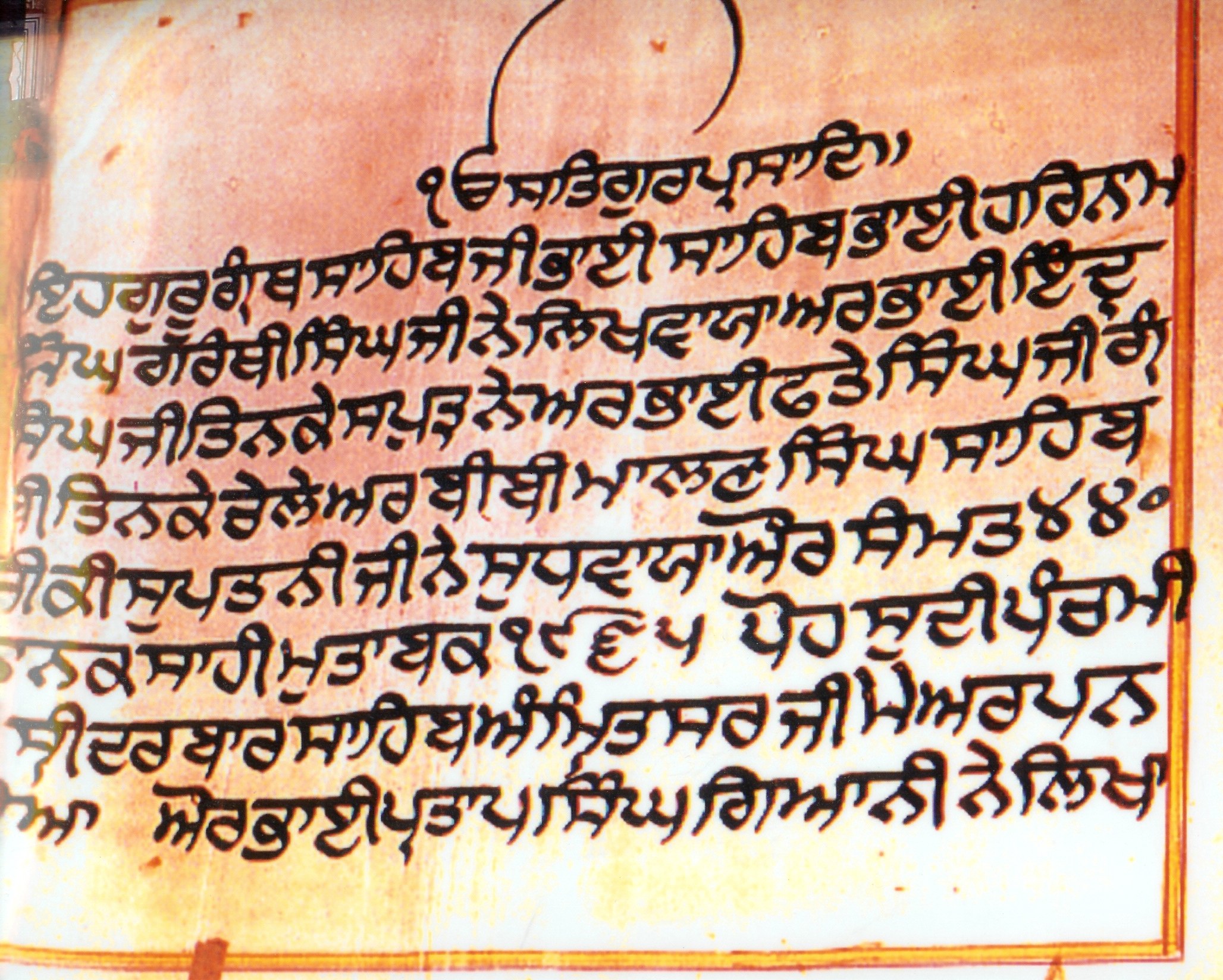
The Sikh scriptures are unique among the religious "Holy Books" of the world in that they don't just offer spiritual guidance for the Sikhs alone but impart guidance and assistance for all the peoples and religions of the world.
The Siri Guru Granth is a supreme treasure for all mankind. It is the true and permanent spiritual guide of the Sikhs. Guru Granth Sahib transcends creed and caste, cant and convention. It does not belong to the Sikhs alone. It consecrates the sayings of 11 Hindu bhagats and as many bard poets and seven Muslim saints, along with the teachings of six Sikh gurus.
No other religion has included in its holy book the sayings of others, however revered. The Guru Granth Sahib provides unique and unequalled guidance and advice to the whole of the human race. It is the torch that will lead humanity out of Kaljug, (the dark era) to a life in peace, tranquillity and spiritual enlightenment for all the nations of the world.
This is what Bertrand Russell said "....that if some lucky men survive the onslaught of the third world war of atomic and hydrogen bombs, then the Sikh religion will be the only means of guiding them." Russell was asked that he was talking about the third world war, but isn't this religion capable of guiding mankind before the third world war? In reply, Russell said, "Yes, it has the capability, but the Sikhs have not brought out in the broad daylight, the splendid doctrines of this religion which has come into existence for the benefit of the entire mankind. This is their greatest sin and the Sikhs cannot be freed of it." .....More
Contents: Top 100. 110. 120. 130. 140. 150. 160. 170. 180. 190.
126
Sat Sri Akal - a Punjabi movie, is the name of a unique upcoming socio-religious family entertainment movie to be released on 7 November 2008 to commemorate 300th anniversary of Gurgaddi Divas of Guru Granth Sahib ji.
The movie, production of Mata Tripta Ji Charitable Trust is a story revolving around the love, sentiments and faith towards Sri Guru Granth Sahib. The narrative of the movie affirms and reiterates that Almighty God always stands by the ones who are drenched in His love and have full trust in Him. Based on true happenings, the movie is a live account of a family having immense belief in Waheguru, a story splendidly told amongst heart rending gurbani/shabads sung by legends like Jagjit Singh, Alka Yagnik, Kavita Krishnamurty, Abhijit, Sadhna sargam and one sweet-romantic, another foot-tapping song by Sunidhi Chauhan ...
Starcast: Kimi verma, Manpreet Singh, Vivek Shauq, Aron Bali, Dolly Minhaas, Neelu Kohli, Manmeet Singh. .....More
Contents: Top 100. 110. 120. 130. 140. 150. 160. 170. 180. 190.
127
The Chittisinghpura Massacre refers to the cold blooded murder of 35 Sikhs, which occurred on the evening of March 20, 2000 at small Jammu and Kashmir village called "Chittisinghpura". The massacre was carried out by about 20 unidentified terrorists though a member of the Islamic fundamentalist militant group Lashkar-e-Toiba ("LeT") has confessed to their involvement in the massacre. According to Amnesty International, the massacre was linked to other massacres in the region where the people have doubted the government's account of the story. 1
Several witnesses have said that about 20 men, clad in olive green combat fatigues, arrived in the village at 7-15 p.m. They told the people that they were Indian soldiers, and ordered the men out to be questioned. The captors spoke Urdu. The village men were lined up in two groups, a few hundred metres from each other. One of the captive men who had been lined up recognised someone among the gunmen. He asked, "Chattiya, tu idhar kya kar raha hai?" ("Chattia, What are you doing here?"). The person he spoke to immediately opened fire. At the same time all captors began firing. As they started firing, the gunmen shouted 'Jai Mata Di' and 'Jai Hind'. In theatrical fashion, one of them took swigs from a bottle of rum even as the killing went on. While leaving, one of the men called out to his associates: "Gopal, chalo hamare saath" ("Gopal, Come with us"). .....More
Contents: Top 100. 110. 120. 130. 140. 150. 160. 170. 180. 190.
128
The Sikh Gurus believed in giving the individual complete freedom to choose his or her spiritual path. They believed that there should be no compulsion or force used when an individual makes this choice.
Most of the disciples of the Gurus became their followers after listening to the Gurus' sermons and then voluntarily following the guidance provided by the Gurus.
The Sikh spiritual masters made no promises of heaven or paradise to entice these followers to follow the path of Dharma (righteousness).
The disciples were not told that because they were Sikhs and followers of the Gurus, only they would be welcomed by God. The Guru made it clear that only by following the path of truth and by undertaking righteous actions can one become dear to the Lord thus:
"One who practices truth, righteous living, charity and good deeds,
has the supplies for God's Path. Worldly success shall not fail him.(2)" SGGS Page 743
Bhai Mardana was a life long companion of Guru Nanak, the founder of Sikhi. Bhai Mardana was a Muslim from birth and remained as such until his last day. .....More
Contents: Top 100. 110. 120. 130. 140. 150. 160. 170. 180. 190.
129
A Gurdwara dedicated to a Noble Man - Perhaps, this is the first and last Gurdwara, named after a person other than the Sikh Gurus.
Gurdwara Dr. Diwan Singh is a Sikh shrine located in the heart of Port Blair in the Andaman Islands. This Gurdwara was established in 1937 by Dr. Diwan Singh Kalapani a well known independence martyr. This Gurdwara is built with wood on a foundation of iron pillars. This is one of the oldest Gurdwaras in Port Blair. The Gurdwara is in the Aberdeen Bazaar and caters to the Punjabi community of the Andaman and Nicobar Islands.
The Gurdwara's foundation was laid by the local Panj Piare on 1st August 1937, at first it was refered to simply as the "New Gurdwara". The whole community of Port Blair, that's right -- not just the Sikhs!, but citizens - whether Christian, Hindu or Muslim, joined the five respected Sikhs and their Sikh brothers and sisters in the building of the Gurdwara. Practically everyone who lived in Port Blair devoted their time, energy and resources to complete this 'New Gurdwara'. Even the Military Police denoted a sum of Rs. 500/- towards the construction fund. .....More
Contents: Top 100. 110. 120. 130. 140. 150. 160. 170. 180. 190.
130
duplicate .....More
Contents: Top 100. 110. 120. 130. 140. 150. 160. 170. 180. 190.
131
Mata Ganga asked her husband Guru Arjan for the gift of a son, for he had granted the wishes of so many Sikhs, surely he would answer hers as well. Guru Arjan told Mata Ganga to go and seek Baba Budha’s blessing. Mata Ganga got her helpers to prepare a huge amount of lavish food and took a large procession on chariot to see Baba Budha. When Mata Ji asked Baba Ji’s for his blessing, Baba Ji replied that he was a simple grass cutter and didn’t have such noble ability. Mata Ji left the scene disappointed. On her return, she narrated the events to her husband. Guru Arjan explained that if she wanted blessings, she should have gone to see Baba ji on foot; in a small group; and she should have lovingly cooked a simple meal herself.
She did exactly that the next day. Obviously, Baba ji was very pleased. He took hold of an onion in his left palm and said; “Your son will be the Master of Masters, he will be the King of his people and he will break the rule of the tyrants as I break this onion under my fist.” - smash!!
At the age of 11, young Guru Har Gobind was nominated by his father, Guru Arjan as the next Guru. The Sikhs celebrate this auspicious day, every year, on July 5th. Before Guru Arjan depart from this earth, he sent a message to his son;
“Let him sit fully armed on the throne and maintain an army to the best of his ability” .....More
Contents: Top 100. 110. 120. 130. 140. 150. 160. 170. 180. 190.
132
Zafarnama means "Declaration of Victory" and is the name given to the letter sent by the tenth Sikh Guru, Guru Gobind Singh in 1705 to the Emperor of India, Aurangzeb. The letter is written in exquisite Persian verse. In this letter, Guru Ji reminds Aurangzeb how he and his henchmen had broken their oaths taken on the holy Koran.
Despite this deception, this treacherous leader could not harm the Guru. Guru Ji states in this letter that in spite of his several sufferings, he had won a moral victory over the crafty Mughal who had broken all his vows and had resorted to underhand behaviour. Despite sending a huge army to capture or kill the Guru, the Mughal forces did not succeed in their mission.
The letter reads like a reprimand by a superior personality on a higher plane to a cruel and distorted inhuman being on a lower and pitiful plane. Guru Ji in the 111 verses of this notice rebuke Aurangzeb for his weaknesses as a human being and for excesses as a leader. Guru Ji confirms his confidence and his unflinching faith in the Almighty even after suffering extreme personal loss. .....More
Contents: Top 100. 110. 120. 130. 140. 150. 160. 170. 180. 190.
133
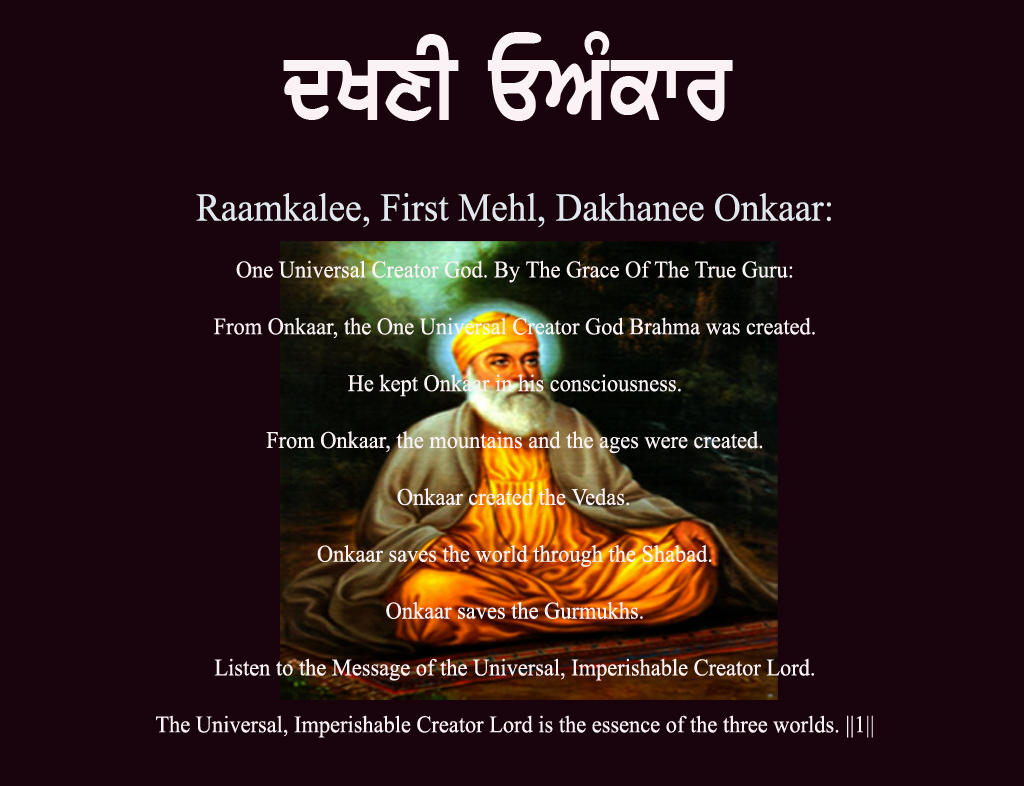
Dakhni Oankar or simply Oankar is a composition of 54 stanzas by the founder of Sikhism, Guru Nanak's in the measure Raag Ramkali in the Guru Granth Sahib. The full title of the bani is Ramkali Mahala 1 Dakhani Oankaru.
The composition appears in the holy Granth at pages 929 to 938. The title is explained differently by different scholars. The word "Dakhan" means "south" and "Oankar" is a reference to "The Creator".
This Bani (composition) is composed in the form of an acrostic, each stanza beginning with one of the letters of the Sanskrit alphabet. However, some of the sounds of the Sanskrit alphabet do not exist in the Gurmukhi language used by Guru Nanak. In such cases, prevalent equivalent sounds are used to represent the letters of the old script.
For example, 'j' is used for 'y' and 'b' for 'v'. "Oankar" opens with verses in praise of God who is remembered as the creator of all that exists; of time with all its different cycles; and of the entire universe. Then follows the verse of rahau (pause) indicating the central theme of the bani: "0 Pandit, why are you involved in the writing of such idle hieroglyphics - write the name of God alone."
After this begins the acrostic form. The emphasis is on ethical and spiritual teaching. .....More
Contents: Top 100. 110. 120. 130. 140. 150. 160. 170. 180. 190.
134
Makhan Shah Labana, was a merchant who used to bring valuable merchandise by sea and sell it wholesale in parts of Gujarat and Punjab in India.
During one of these sea journey's, his ship was caught up in a furious storm while he was sailing, fully loaded with trade goods northwards, up the coast of India towards the Gulf of Khambhat.
The ship was terribly damaged during the storm, with the force of lightning splitting the mainsail, the sails hanging in shreds, the ship taking on water and when it seemed like he would lose the ship, Makhan decided his time had come to remember his Guru and ask for his help.
Completely powerless, he knelt down, and said his Ardas (prayer) to God and Guru Nanak for safety. "Baba jee", he prayed desperately, "Please save my ship and my men... I pledge the 500 gold mohars tied to the belt at my waist, which without your help will soon be at the bottom of the sea.
Please accept this as my humble offering." He then recited the following Shabad of Guru Arjan Dev: "ਅਪੁਨੇ ਸੇਵਕ ਕੀ ਆਪੇ ਰਾਖੈ ਆਪੇ ਨਾਮੁ ਜਪਾਵੈ ॥ ...He Himself preserves His servants; He causes them to chant His Name. Wherever the business and affairs of His servants are, there the Lord hurries to be. (1)"
Miraculously the wind started to die down, and the wild sea became calm. .....More
Contents: Top 100. 110. 120. 130. 140. 150. 160. 170. 180. 190.
135
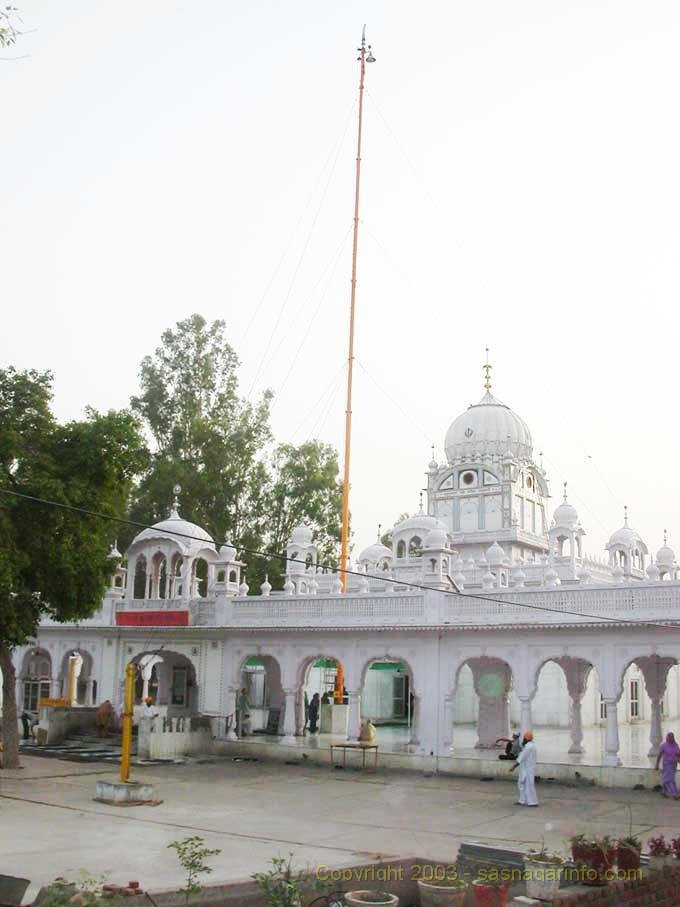
Bhai Kuram Singh, a Labana by caste, was a resident of village Lambian. He was a Sikh during the times of Guru Arjun and Guru Har Rai. Bhai Kuram came to Amritsar to respect and have a glimpse of Guru Arjan. During his visit, mangoes were in season. Many visitors were coming to attend the darbar of the now famous Sikh Guru, the great Guru Arjan. The place was heaving with devotees. Many followers were presenting their gifts and offerings to the Guru. Followers from Kabul had brought with them large sumptuous ripe mangoes. In those days Kabul was famous for its mangoes.
Bhai Kuram Singh felt sorry that he had come from the land of mangoes but had not brought with him any mangoes while many others from his region were carrying large loads of these delicious fruits. When the darbar concluded that night, the ripe mangoes were distributed as Parshad (blessed food). After receiving their parshad, the followers retired to their deras (sleeping quarters) for the night. Bhai Kuram Singh did not eat the mango given to him as parshad. Next day he got up in the morning, took bath and took the mango received as parshad and offered the same back in darbar that morning.
The great Guru Arjan called Bhai Kuram and said "This mango was given to you as parshad but you have offered the same here".
Bhai Kuram Singh very humbly bowed before the Guru and requested "Your Highness, I have come from the land of mangoes but had not brought any for offering to you, so I retained this for offering to you today."
Guru Ji ordered him to eat the fruit and promised him that his offerings will be accepted by the Guru one day. .....More
Contents: Top 100. 110. 120. 130. 140. 150. 160. 170. 180. 190.
136
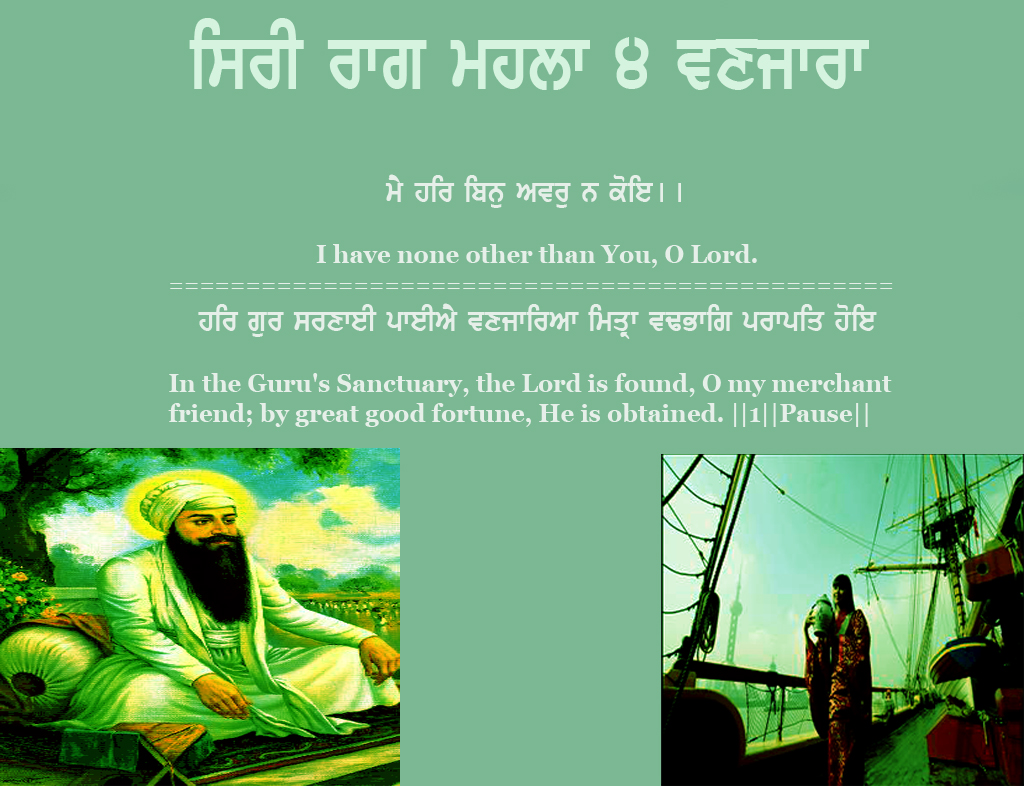
Vanjara is poetry in the form of Gurbani in the Guru Granth Sahib. It was composed by Guru Ram Das in Sri Raag.
In this poetry, the Guru is giving advise and pointing the "Vanjara" (the merchant or trader), in the correct spiritual direction. He is calling him a friend and telling him how to find the Lord.
The Guru says that the trader or merchant who remembers God's name will always be blessed just like Baba Makhan Shah Labana, who was a trader who was blessed by Guru Tegh Bahadur as he performed Ardas before the Guru to help save his doomed ship.
The trader who remembers the Lord at all times, the Guru says moves away from ego. The ones who remain attached to Maya and are egoistic are called "prostitute's son" as they do not recognise God as their father. Ego comes from wealth and it is common that traders are money minded and attached to their wealth.
So the Guru gives traders clear advise not to be attached emotionally to Maya or money because money will never go with you in the end - those attached to money will "depart crying". When you are young and in good health, recite the Lord's Naam because soon the youth and good health will leave and you will have no support. .....More
Contents: Top 100. 110. 120. 130. 140. 150. 160. 170. 180. 190.
137
This wonderful historical Gurudwara is situated in Chungthang, which is a town in North Sikkim, an Indian state. Sikkim is a small but beautiful landlocked state nestled in the Himalayas in northern India. It is situated at the confluence of two rivers: River Lachen and Lachung Chu, both tributaries of the "most scenic" River Teesta. The thumb-shaped state borders Nepal in the west, the Chinese Tibet Autonomous Region to the north and east, Bhutan in the south-east and the Indian state of West Bengal to its south.
Chungthang is located in this state at a distance of 95 kilometres from the capital Gangtok, at an elevation of 1,700 metres (5,600 ft). Guru Dongmar is a lake at a height of 18,000 feet alongside a glacial peak known by the same name. The lake remains frozen most of the year due to heavy snowfall for almost six months each year. .....More
Contents: Top 100. 110. 120. 130. 140. 150. 160. 170. 180. 190.
138
On August 8 every year, the global Sikh community remember the sacrifice made by thousands of their brethren in respect of "Guru ka Bagh Gurdwaras".
This article outlines the struggle by the Sikhs to see justice in respect religious freedom, their right to determine their religion and the management of their Gurdwaras - places of worship.
Below is an account of a major campaign in the Sikh agitation that took place in early 1920's. This resistance was for the reformation of their Gurdwaras (holy places).
Many Gurdwaras had been freed without much problem but they faced a serious hurdle here. Guru ka Bagh in Ghukkevali village is located about 20 km from Amritsar. It has two historic Gurdwaras close to each other, commemorating the visits respectively of Guru Arjan in 1585 and Guru Tegh Bahadur in 1664. .....More
Contents: Top 100. 110. 120. 130. 140. 150. 160. 170. 180. 190.
139
Dasam Granth contains 1428 pages and is the collection of the writings by the 10th "Patshah", Sri Guru Gobind Singh ji. It starts with his Jaap Sahib, the Akal Ustat or praise of the Creator and the Bachitar Natak or "Wonderful Drama", which gives an account of the Guru's parentage, his divine mission, the battles fought, etc.
Then come three abridged translations of the Devi Mahatamya, an episode in the Markandeya Puran, in praise of Durga the Goddess of war (Chandi Chritras: Chandi Chritra I, Chandi Chritra II, Chandi Ki Var).
Then follows the Gyan Parbodh, or awakening of knowledge; Chobis Avatar - accounts of twenty-four incarnations of the Vishnu, according to the Hindus, and Brahmavatar and Rudravtar, selected because of their warlike character; the Shabad Hazare; quatrains called Sawaiyas, which are religious hymns in praise of God and reprobation of idolatry and hypocrisy; the Khalsa Mahima, or words in praise of the Khalsa.
The final section contains, Shastar Nam Mala, a list of offensive and defensive weapons used in the Guru's time, with special reference to the attributes of the Creator; the Charitropakhyan, or tales illustrating the qualities of people, but principally the deceit and tricks of women; the Kabiovach Bainti Chaupai will "absolve the suffering, pain or fear of the person, who will even once recite this Bani"; the Zafarnama, containing the tenth Guru's epistle to the Emperor Aurangzeb; and Hikayats, several metrical tales in the Persian language. .....More
Contents: Top 100. 110. 120. 130. 140. 150. 160. 170. 180. 190.
140
Sikh Temple Makindu is located about 100 miles (160km) from Nairobi on the main Nairobi to Mombasa Road. It was built in 1926 by the Sikhs who were working on the construction of the railway line from the coast (Mombasa) inland to Lake Victoria and beyond to Uganda.
The official opening ceremony of the Makindu Gurdwara is recorded to have taken place on Sunday 27th April, 1930. Today, all types of people visit this Gurdwara everyday and it is a 'must-see' Gurdwara for any Sikh travelling to Kenya and East Africa.
It provides a peaceful atmosphere where one can meditate and calm ones mind before proceeding to join the "rat-race" again. The Gurdwara complex is very large and has facilities for langar around the clock and living accommodation for travellers.
Set in the forest off the main road, the Makindu Gurdwara is the only convenient rest stop for weary motorists on this busy and long road to and from Mombasa. So the Sikh community of Kenya have done something special. They have built a beautiful edifice and campus where anyone of any religion or of no religion can withdraw from the mundane and reflect on the spiritual. This large complex houses a huge dining facility which provides free langar 24 hours a day as determined by their founder Guru, Guru Nanak Dev. .....More
Contents: Top 100. 110. 120. 130. 140. 150. 160. 170. 180. 190.
141
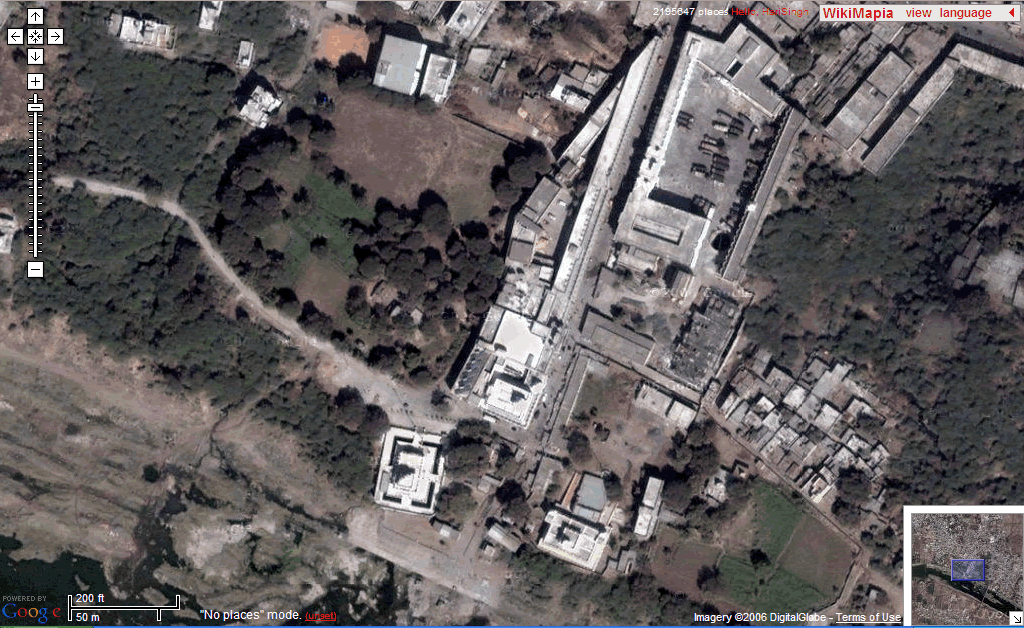
Takhat Sachkhand Sri Hazoor Sahib is the principal Sikh shrine at Nanded in the Indian state of Maharashtra. It marks the site where Guru Gobind Singh had his camp in 1708 after the departure of the emperor Bahadur Shah and where in October 2008, the 300th anniversary celebration of the Guruship of Guru Granth Sahib took place.
The tenth Guru held his court and congregation here. It is the site of his own tent where he was convalescing after he was attacked by assassins and the place at which Guru Gobind Singh ji 's light rose to rejoin the light of the Creator.
This site is now one of the five Takhats which are places of primary historical importance to the Sikhs. The other four takhats are: Akal Takhat at Amritsar, Takhat Keshgarh Sahib at Anandpur, Takhat Patna Sahib in Bihar District and Takhat Damdama Sahib in Talwandi Sabo, Bhatinda, Punjab.
In 1708 being prescient of the end of his earthly role, the Guru had dispatched five of his Sikhs under the command of his newly appointed Jathedar Banda Singh to Punjab and Mata Sahib Devan under a separate escort to Delhi before the stabbing incident. He told the rest of his retinue to retire to their homes if they so wished, but he bade one Bhai Santokh Singh to stay on here and keep Guru ka Langar going. .....More
Contents: Top 100. 110. 120. 130. 140. 150. 160. 170. 180. 190.
142
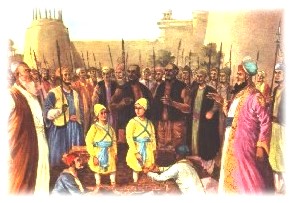
On December 12 every year, the global world Sikh community celebrate the birthday of their youngest hero and a brave comrade of Sikhism.
Sahibzada Fateh Singh (1699-1705) was the youngest of Guru Gobind Singh's four sons or sahibzade and was born to Mata Jito at Anandpur on 12 December 1699.
After the death of his mother, on 5 December 1700, he was brought up under the care of his grandmother, Mata Gujari Kaur, with whom he remained until his last breath.
He with his elder brother, Sahibzada Zorawar Singh have become an unbelievable and most unfortunate precedence in Sikh history (and perhaps also in world history) by becoming the youngest known martyrs to sacrifice their lives for their principles and the right to practice their religion and their faith without coercion or the threat of terror.
Even at such a tender age of 6 years, Baba Fateh Singh showed courage, determination and free-will not to be intimidated by the cruel, barbaric .....More
Contents: Top 100. 110. 120. 130. 140. 150. 160. 170. 180. 190.
143
Mr. Vasu Bhardwaj was a Special Correspondent of Gujarati "Mitr", a daily newspaper published from Surat, India. This science researcher with American educational background was working in India when in 2001, he was diagnosed suffering from bone cancer and doctors soon pronounced defeat at finding a cure for him. The story below is written by Mr Bhardwaj:
When recitation of Gurbani cured me of deadly cancer, I experienced God. "When You are on my side, Lord, why should I worry?" and "If God is with me, who can harm me?" Not even the deadliest disease of cancer can take my life away and that is exactly the divinely inspiring message of the truly miraculous story of my victorious battle against bone cancer which was medically diagnosed to be multiple melanomas.
It was the Akhand Paath (continuous recitation of Gurbani) that not only cured me of bone cancer that had already destroyed most of my bones in my skeleton, but also shattered my will to live. The blessings of Guru Granth Sahib not only triggered and accelerated the processes of complete and total cure in my body, but the Guru also enabled me to experience God. This also inspired me to pursue Naam therapy to totally and permanently get rid of otherwise fatal bone cancer. .....More
Contents: Top 100. 110. 120. 130. 140. 150. 160. 170. 180. 190.
144

Anand Karaj (Punjabi: ਅਨੰਦ ਕਾਰਜ, anand kāraj) is the name given to the Sikh wedding ceremony, literally translated as "Blissful Event".
Sikhs regard marriage as a sacred bond of mutual dependence between a man and a woman; a true partnership of equals in marriage is made between those who are united in spirit as well as in mind and body.
Marriage is regarded as a strong lifetime bond between the bride and groom and and a union between both the families of the bride and groom.
Based on the concept depicted in Laava, the Sikh marriage is not merely a physical and legal contract but is intended to be a fusion of the souls; a holy union between two souls, where physically they appear as two individual bodies but in fact are united as one both spiritually and in thinking. The couple must feel and think alike and both must identify with the other, i.e. they need to become "Ek Jot Doe Murti" meaning "one spirit in two bodies".
The Laava, or four stanzas, are read and then sung during the ceremony to formalize and sanctify the marriage. .....More
Contents: Top 100. 110. 120. 130. 140. 150. 160. 170. 180. 190.
145
From August 30 to September 1 this year (2011), the Sikhs will celebrate 407 years since the completion and first installation of their "Holy Book" called the Adi Granth.
This is the only holy scripture in the world which was written by the founders of the religion during their lifetime. This Granth (book) was compiled and then installed for the first time at Harimandir Sahib in Amritsar in 1604.
In the beginning, it was simply called the Adi Granth which literally means "the first book". The holy scripture contains hymns written by the Sikh Gurus, saints and scholars of different religions and was finally completed on 30 August 1604.
On September 1, 1604 it was installed for the first time at the Golden Temple in Amritsar, Punjab, India. Ever since then it has been showering important messages and valuable guidance for the benefit of the whole of humanity.
This initial compilation of the main Sikh Scripture by Guru Arjan, the fifth Sikh Guru was performed with much love, labour and dedication. The tenth Sikh Guru, Guru Gobind Singh added further holy Shabads (hymns) to this Granth during the period around 1705. .....More
Contents: Top 100. 110. 120. 130. 140. 150. 160. 170. 180. 190.
146
Maharaja Ranjit Singh (13th November 1780 - 27 June 1839) also called "Sher-e-Punjab" ("The Lion of Punjab") was the Sikh ruler of the sovereign country of Punjab and the Sikh Empire from about 1799. Maharaja was born on November 13, 1780 in Gujranwala in modern day Pakistan, into the Sansi-Sandhawalia family.
At the time, much of Punjab was ruled by the Sikhs, who had divided the territory among factions known as Misls. Ranjit Singh's father Maha Singh was the commander of the Sukerchakia misl and controlled a territory in west Punjab based around his headquarters at Gujranwala. Ranjit Singh succeeded his father at the young age of 12.
After several campaigns, his rivals accepted him as their leader, and he united the Sikh factions into one state and he took the title of Maharaja on April 12, 1801 .....More
Contents: Top 100. 110. 120. 130. 140. 150. 160. 170. 180. 190.
147
Gurudwara Nangali Sahib is situated in the lap of a picturesque hill and on the bank of Drungali Nallah. It is about 4 kms from Poonch town in Poonch district, which is the smallest of the 14 districts of Jammu & Kashmir state. It is one of the oldest shrine of the Sikhs in Northern India.
Presently the Gurudwara complex consists of the main Gurdwara building, a Langar Hall and about 70 living rooms. Large number of devotees belonging to all faiths visit this shrine from all over the country every year.
This holy Sikh shrine is approximately 240 Kms from Jammu city by road (but only about 150km as the crow flies)which in turn is connected to rest of the world via road, rail and airline network. Pilgrims outside the state may use railways or air services up to Jammu and then travel by road to Poonch.
The Gurdwara was established by Thakur Bhai Mela Singh ji (Fourth successor of Sant Bhai Feru Singh ji) in 1803 AD. Maharaja Ranjit Singh visited Gurdwara Nangali Sahib in 1814 and was very much impressed by it. .....More
Contents: Top 100. 110. 120. 130. 140. 150. 160. 170. 180. 190.
148
On October 9 every year, the worldwide Sikh community celebrates the birth of their fourth master, Guru Ram Das.
Guru ji was born at Chuna Mandi Bazaar, Lahore at the site of the present holy shrine on 9 October, 1534 where he spent his first seven years of life. Soon after birth, he was given the name "Jetha", meaning the "first born".
His simple and God-fearing parents, Hari Das and Anup Devi of Lahore were delighted at this precious gift from Waheguru. As he was growing up and in his teens, he would be found in the company of religious men. Jetha became a handsome young man.
One day he came across a party of Sikhs who were on their way to Goindwal to pay homage to Guru Amar Das ji, the third Sikh Guru. He decided to join them and also travel to Goindwal. Upon their arrival and meeting, Guru Amar Das, the third Sikh Guru at once noticed the young Jetha with his pleasant manner and sense of devotion.
While his fellow travellers returned to Lahore, Jetha decided to stay and become a disciple of Guru Amar Das ji. .....More
Contents: Top 100. 110. 120. 130. 140. 150. 160. 170. 180. 190.
149
Every year on 16 April, the Sikhs commemorate the passing away of their eighth Guru, Guru Har Krishan - also fondly called "Bal Guru" ("Child Guru") as Guru ji attained Guruship at a young age of just over 5 years old.
Each year during late July, huge celebrations are held at Gurdwara Bangla Sahib in Delhi, India to celebrate the birth of Guru ji on 23rd July.
It was at this location that Guru ji stayed at Raja Jai Singh's bungalow when visiting Delhi during the reign of Mughal Emperor Aurangzeb.
Guru Har Krishan was born on 23 July, 1656 at Kiratpur Sahib, Punjab, India and was the second son of Guru Har Rai (seventh Sikh Guru) and Mata Krishan Kaur. When the Guru came to Delhi, he stayed at the bungalow of Raja Jai Singh; there was a severe smallpox epidemic and many thousands of people were dying.
By Guru's blessing, the pool at Bangla Sahib, which is built at the site of Raja Jai Singh's bungalow provided cure for thousands of suffering people. Gurdwara Bangla Sahib is thus blessed by the healing powers of this eighth Sikh Guru. The tenth Sikh Guru, Guru Gobind Singh wrote in his famous "Vaar Sri Bhagauti Ji Ki" – "Remember Sri Harkrishan, whose vision dispels all pains". Gurdwara Bangla Sahib is not only visited by thousands of Sikhs but also by people of other faiths. .....More
Contents: Top 100. 110. 120. 130. 140. 150. 160. 170. 180. 190.
150
Guru Nanak Medical Centre is a charitable hospital based at Secunderabad in Andhra Pradesh, India.
The Gurdwara Sahib, Secunderabad, and Guru Nanak Charitable Trust opened this medical centre on the premises of Gurdwara sahib on Sunday, October 07, 2007.
According to the Prabhandak Committee president, S. Baldev Singh Bagga and convener R.S. Saluja, this state-of-the-art polyclinic and diagnostic centre will provide free and low-cost medical treatment for the poor and needy of all religions and communities.
Shiromani Gurdwara Prabhandak Committee president S. Avtar Singh Makwar, who was visiting the state of Andhra Pradesh for the first time, inaugurated the centre. It was said by the local people that this day care medical centre had become necessary to meet the demand of people in Secunderabad and surrounding localities when the Gandhi General Hospital moved to Musheerabad. .....More
Contents: Top 100. 110. 120. 130. 140. 150. 160. 170. 180. 190.
151

SikhiWiki is now available translated into 13 different languages. Thanks to Google's new automatic translation service, SikhiWiki has been able to provide this facility.
It is hoped that many millions who were unable to read about Sikhism before, will now be able to do so using this new feature.
Sikhi, an incredibly valuable addition to human knowledge and wisdom will now be available to be read by many millions who previous weren't in this position before the advent of this new technology. Now people in many foreign and distant lands will be able to know and learn about the beautiful and unique message of the Sikh Gurus.
Five of the most widely spoken languages are available by using a single click to an option in the sidebar marked "translate into" on the left sidebar of the SikhiWiki screen. Below is a full list of all the languages available through this Google service. Click on the link below to start reading in any of the languages shown:
(1) Arabic (2) Chinese (Simplified) (3) Chinese (Traditional) (4) Dutch (5) French (6) German (7) Greek (8) Italian (9) Korean (10) Japanese (11) Russian (12) Spanish (13) Portuguese .....More
Contents: Top 100. 110. 120. 130. 140. 150. 160. 170. 180. 190.
152
Sikhcess, a community-service organization dedicated to promoting the basic Sikh principles of public service (Seva) and equality, announced on March 9, 2008 that their volunteers around the world had successfully surpassed internal estimates and distributed more than 42,000 meals to the homeless and needy last Saturday, March 1st, the largest-ever initiative undertaken by the non-profit organization.
The principle of selfless service called Seva and the distribution of free food called Langar are a gift to the world from the founder prophet of the Sikhs, Guru Nanak. The first Sikh Guru was born in 1469 in Punjab (in the north of the sub-continent of India) and was the first of the ten Gurus of the Sikhs. All Sikhs are encouraged by their Gurus to perform Seva or selfless community service. This is not only important for community relations but is also invaluable for the moral uplifting of the person.
Langar or "free kitchen open to all" was started by Guru Nanak and is designed to uphold the principle of equality between all people of the world regardless of religion, caste, colour, creed, age, gender or social status. In addition to the ideals of equality, the tradition of langar expresses the ethics of sharing, sense of community, inclusiveness and the oneness of all humankind. The Guru Granth Sahib confirms that "..the Light of God is in all hearts." (sggs 282) .....More
Contents: Top 100. 110. 120. 130. 140. 150. 160. 170. 180. 190.
153
Guru Angad Dev (1504 - 1552) was the second of the ten Gurus of Sikhism. Guru ji's original name was Bhai Lehna.
Bhai sahib following in the footsteps of Guru Nanak, who was the first Sikh Guru and founder of the Sikh religion became the second Sikh spiritual master on September 18 1539.
Guru Angad Dev was born on April 18, 1504 and this auspicious day is doubly celebrated by the Sikhs every year together with the birthday of their ninth master, Guru Tegh Bahadur born on April 18 1621.
The institution of langar was given prominence and further maintained and developed during the Guruship of the second master. The Guru's wife, Mata Khivi personally worked in the kitchen to prepare the food and guide others in managing this important function.
She also served food to the members of the community and visitors. Her devotion to this institution finds mention in Guru Granth Sahib, the holy book of the Sikhs.
Guru Angad also invented the present form of the Gurmukhi script. It became the medium of writing the Punjabi language in which the hymns of the Gurus are expressed. .....More
Contents: Top 100. 110. 120. 130. 140. 150. 160. 170. 180. 190.
154
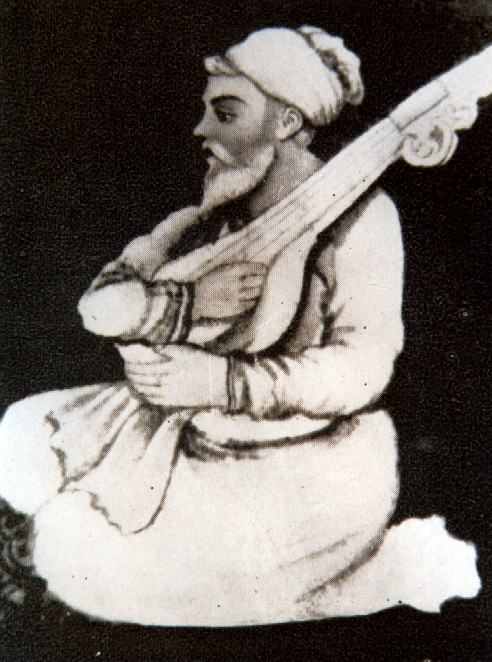
Bhai Mardana, for forty-seven years, travelled with Guru Nanak wherever the Guru went. Whether it was in the bitter cold of the hills or the heat of the deserts, he was never far away from the Guru's side.
The fear of wild animals, hunger, thirst or even the warm thoughts of a loving, comfortable home never brought the five vices - lust, anger, greed, attachment and pride to his mind for he had replaced them with the five virtues - truth, contentment, patience, humility, compassion and love. He was given the honor by the Guru of being a saint and a brother to all. The Guru also included his Bani (verses) in the Sri Guru Granth Sahib.
Mardana who was nine years older than Guru Nanak and was the son of a "mirasi" Muslim. The Mirasis were men who earned their living by entertaining others. They were known as "Bhand" (bards) or "Naqqal" (actors or jesters); they were the great story tellers of Punjab. Often very poor, some were lucky enough to find jobs in the darbars of the feudal rulers and provisional leaders to supplement their incomes.
In the days before established postal services, they often did odd jobs in the villages of Punjab. .....More
Contents: Top 100. 110. 120. 130. 140. 150. 160. 170. 180. 190.
155
Diwan Todar Mall was a wealthy merchant of Sirhind, who on the 13 December 1705 performed the cremation of the three martyred bodies of the family members of the tenth Sikh Guru.
These included the two younger sons of Guru Gobind Singh, Zorawar Singh aged about 6, Fateh Singh aged about 9 and their grandmother, Mata Gujari - the mother of the tenth Guru.
This incident occurred after the Sahibzade had been executed by the Mughal authorities on the 12 December 1705 for not renouncing their faith.
Subsequently, their grandmother died from shock at the news of the sudden and despicable execution of the innocent youngsters. To get the release of the three bodies of the Guru's household, this wealthy merchant had to cover the required ground for cremation with gold coins.
The compassionate Sikh trader of Sirhind, according to tradition, performed the last rites for the two younger sons of Guru Gobind Singh martyred on the orders of Wazir Khan, faujdar of Sirhind, and of Mata Gujari, the Guru's mother. It is said that landowners around the Sirhind Fort would not permit him to hold the cremation in their fields, until one Chaudhari Atta agreed to sell him a plot. .....More
Contents: Top 100. 110. 120. 130. 140. 150. 160. 170. 180. 190.
156
The Sukhmani sahib is probably the greatest composition of the fifth Sikh Guru, Guru Arjan.
This Gurbani in raga Gauri Sukhmani in the Guru Granth Sahib is a lengthy composition which spans a total of 35 pages from page 262 to page 296 of the sacred Granth.
Its lyrical beauty apart, Sukhmani is a profoundly significant scriptural text for all devotees of the Sikh faith and indeed for all of humanity.
It is said that the Guru wrote it in response to request from a devotee who was suffering from physical pain and mental anguish; the recital of Sukhmani restored him to good health and a calm and peaceful state of mind. The word 'Sukhmani' means the "psalm of equipoise" (balanced state) or "jewel of bliss". This holy bani (hymn) is a treasure of the rarest kind and will bring pure happiness and true bliss for whoever recites it with dedication.
This unique prayer which, not only can be read just as any other bani but can also be sung with music accompaniment has only one focus - to bring "Sukh" or peace to the person’s mind. .....More
Contents: Top 100. 110. 120. 130. 140. 150. 160. 170. 180. 190.
157
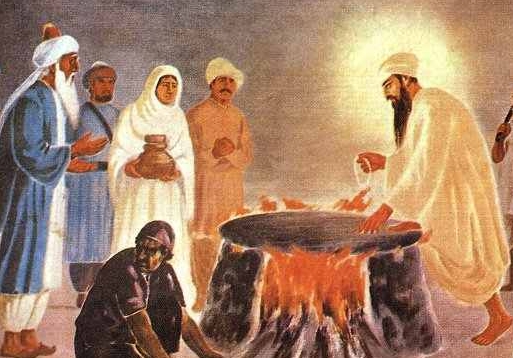
May your doings appear sweet to me"
A Sikh is a person who accepts Gurbani (the Guru's words) as his or her spiritual guide and who adheres to the message contained within its holy pages.
Sikhi is the message of the holy Granth and the code or policy (rehat) by which the person has to live their life. It is fascinating how the underlying message of the Sikh Holy Scripture is a message of pure love.
This love and longing is evident on all the pages of the Sikh scriptures; the Lord is referred to as "Husband Lord", "Beloved", "Immaculate", "Great", "Merciful", etc. all affectionate words for a tender, caring and powerful being.
However, God is not an external entity; God is said to be in all places; in every living things; literally everywhere. Gurbani tells us, "The Lord Himself is within the self, and outside as well...; the Lord Himself is fully pervading everywhere" and also "You are the Great Giver of all souls; You are the Life within all living beings."
The ten Sikh Gurus and the other bhagats of the Sikhs in their compositions in Gurbani, explain over and over again their dedication and their love for the Almighty Lord. Guru Ram Das, the fourth Sikh Guru explains his love for the Lord thus "Without the Lord, I cannot live for a moment, even an instant; I love Him, like the camel loves the vine." (GGS 369). .....More
Contents: Top 100. 110. 120. 130. 140. 150. 160. 170. 180. 190.
158
Although the Indian film industry is the largest in the world in terms of ticket sales and number of films produced annually [1] (877 feature films and 1177 short films were released in the year 2003 alone), Sikhs, especially "Sabat Soorat Sikhs" ("fully fledged" Sikhs with unshorn Kesh) have not had any significant impact in this business arena. Hence, the Sikh community has been waiting to see a "Sabat Soorat Sikh" on cinema and television screens for a very long time. Also, the image of the Sikhs in Bollywood has mainly been shown in derogatory light and their reputation has taken a severe beating for a long time now. Perhaps this is going to change.
No more!
The Sikh community now has Manpreet Singh from Mumbai the hero of 'Sat Sri Akal (Bollywood Movie)', who is leading the wave of turbaned and bearded Sikh role models now appearing in cinema, television and the advertisement world. Leading from the front, they have taken upon themselves the mantle of the battle of respect for the turban and the Sikh image in the world of acting.
With a graduate degree in mass media and a post-graduate degree in management studies from Bombay University, Manpreet Singh has had a chequered and versatile career so far. .....More
Contents: Top 100. 110. 120. 130. 140. 150. 160. 170. 180. 190.
159
The Sikhs started to search for Hemkunt sahib, the “Tap Asthan” (the place of meditation) of their tenth Guru, in the late nineteenth century, even though the shrine is mentioned in the Dasam Granth which was finalised in the 1730’s.
The first Sikh to trace the geographical location of Hemkunt was Pandit Tara Singh Narotam in 1884. He was a nineteenth century Nirmila scholar.
His findings were published by the renowned exponent of Sikh history and scholar, Bhai Vir Singh in 1929 in his book called “Sri Kalgidhar Chamatkar”.
This book was then read by Sant Sohan Singh, who was a retired Granthi (priest) from the Indian army working voluntarily at a gurdwara in Tehri Garhwal. Having read the description of where the "Tap Asthan" was, he set out to find the physical spot in 1933.
Unfortunately he had no luck that year and so he attempted his search again the following year. His enquiries led him to the place known as Lokpal to the local folk.
The description matched that of the place described by the Guru as "Sapat Shring" and the place where King Pandu was believed to have meditated. Sohan Singh believed that Hemkunt had been found. .....More
Contents: Top 100. 110. 120. 130. 140. 150. 160. 170. 180. 190.
160
Suchajee and Kuchajee are the names given by Guru Nanak to two types of "women". These names appear in the raga banis (the raga section) of the main Sikh scripture called the Guru Granth Sahib. The word "Suchajee" means a capable and skilful woman or bride while "kuchajee" is the opposite. This composition is in Raga Suhi.
In this sacred script the Guru tells the world the difference between a noble and good women and a bad and ignoble women. In these banis "woman" is a reference to the soul of all human beings not just that of a woman! These banis which start at page 762 tell us how to become noble brides of God and not to fall into the trap of worldly entanglements and waste this marriage (life).
First the Guru wrote kuchajee bani and then suchajee bani so as to tell how an ignoble soul can become a noble soul. The noble soul is always honoured in God's house. The ignoble soul and noble soul both are provided every happiness in life but the noble soul never forgets the true Lord and the ignoble soul will fall into the well of attachment with worldly things. .....More
Contents: Top 100. 110. 120. 130. 140. 150. 160. 170. 180. 190.
161
Bhai Jivan Singh (1649-1705) was the name given to Bhai Jaita after he had received the rites of initiation at the hands of Guru Gobind Singh on the day - 30 March 1699 when the Khalsa was inaugurated. He was a Sikh who had belonged to the Majhabi (scavenger) caste who was given by Guru Gobind Singh the special epithet of 'Ranghareta Guru Ka Beta ("the young man of the Ranghar caste is the Guru's own son"). The Ranghar caste was a caste created for those born of a union between a Hindu and a Muslim. Both the children and their descendants were considered outcasts by the Hindus.
It was Bhai Jaita who had risked his life to recover and return the severed head of Guru Tegh Bahadur to his family for cremation. He had been sent to Delhi where he witnessed Guru Tegh Bahadur's beheading in Chandni Chowk on 11 November 1675. He succeeded in evading the guards and escaping with the severed head to Anandpur where he was received with much honour by Guru Gobind Singh. In the ensuing storm others were able to secure and cremate the Guru's body, though it took burning down their own home to accomplish this.
Bhai Jaita was born on 30 November 1649 to mother Kanno and father Sada Chand. At the time of his birth, he was named Jag Chand, shortened to Jagu or Jota . He and his younger brother Bhag Chand, also called Bhagu, were disciples of Guru Har Rai, Nanak VII from Kiratpur, in the Sivalik hills, Where the Guru then resided. They shifted along with their parents, to the village of Jhanda Ramdas where they stayed with Bhai Gurditta (1625-1675), the great-great-grandson of Bhai Buddha .....More
Contents: Top 100. 110. 120. 130. 140. 150. 160. 170. 180. 190.
162
The Sarbloh Granth (Punjabi: ਸਰਬਲੋਹ ਗ੍ਰੰਥ, sarablŝha granth) is a collection of poems (shabads) that recites the story of gods and demons, and is said to be the work of Guru Gobind Singh.
Sarbloh Granth literally means "the Granth or Scripture of all-steel (or iron)". However, many scholars and researchers question the authenticity of the Granth and its credibility remains in doubt.
According to Pandit Tara Singh Narotam, a nineteenth century Sikh scholar and researcher, the Sarbloh Granth is the work of Bhai Sukha Singh, a granthi (priest) at Takht Sri Patna Sahib. Bhai Sukha Singh, however claimed that he had acquired its manuscript from an Udasi recluse living in a forest near Jagannath Puri (Orissa).
The Akali Nihang tradition who make use of the Granth holds that whereas the Guru Granth Sahib is the embodiment of "Shaant Ras" (essence of peace), the Dasam Granth and the Sarbloh Granth are the embodiments of "Bir Ras" (essence of war). They believe that the difference between the Dasam Granth and the Sarbloh Granth is that although "Bir Ras" is born in the Dasam Granth, it is in the Sarbloh Granth where the individual warrior achieves an everlasting, final and complete lethal cutting edge advantage in this sphere of "Bir Ras". This Nihang belief is not accepted by the majority of the rest of the Sikh community.----> .....More
Contents: Top 100. 110. 120. 130. 140. 150. 160. 170. 180. 190.
163
Gurdwara Sri Guru Tegh Bahadur Sahib - This famous Gurudwara is situated in the heart of the Dhubri town on the bank of the mighty Brahmaputra river in far north-east India.
Guru Nanak the first Sikh Guru visited this place in 1505 and met Srimanta Sankardeva (the founder of the Mahapuruxiya Dharma) as the Guru travelled from Dhaka to Assam.
This historic shrine, Sri Gurdwara Guru Tegh Bahadur or Damdama Sahib at Dhubri in Assam was built in memory of the visit of Guru Nanak. Hence it has great importance for Sikh community. Guru Tegh Bahadur established this Gurdwara during his 17th century visit to the area.
Sikh devotees from all over India and the world assemble in this Gurdwara every year in the month of December to mark the martyrdom of Guru Tegh Bahadur with due solemnity and ceremony. Sikh devotees call this festival Sahidee Guru Parav. .....More
Contents: Top 100. 110. 120. 130. 140. 150. 160. 170. 180. 190.
164
Tarna Dal, the army of the youth, was one of the two main divisions of Dal Khalsa, the confederated army of the Sikhs during the eighteenth century, the other one being the Buddha Dal (army of the elders).
These Dals came into existence in 1734 when, during a truce with Zakariya Khan, the Mughal governor of the Punjab, different roving bands of the Sikhs were concentrated in Amritsar.
The Tarna Dal was subdivided into five Jathas or fighting groups of approximately 1300 to 2,000 men each, mostly mounted. The first was commanded by Baba Deep Singh.
Commonly known, after he met with a martyr's death, the Jatha began to be called the Shahidanwala Jatha (meaning: group of the martyrs).
The second, commanded by Bhai Karam Singh and Dharam Singh of Amritsar, came to be known as Amritsarian da Jatha (meaning: group of the Amritsarias). .....More
Contents: Top 100. 110. 120. 130. 140. 150. 160. 170. 180. 190.
165
Gurdwara Sher Shikar, (Gurdwara of the Tiger Hunt) is situated in Machkund, in Dhaulpur, Rajasthan, northern India. This Gurdwara is connected to the sixth Guru, Shri Guru Hargobind's visit to the area and his part in the fabled hunt.
While travelling towards Gwalior with Emperor Jahangir, Guru Hargobind arrived at Machkund on 4th March, 1612 and stayed in Bhamtipura village. The head of that area informed Jahangir of a deadly lion stalking the local villagers and asked the Emperor to save them from the lion. (The story is told by some with a Tiger and by others with a Lion. 'Shere' can be taken for either animal in Persian or Panjabi.)
It is said that Jahangir had quickly thought to use the lion hunt as an opportunity to bring about Guru Hargobind's death. However, history records that a very different result took place as a result of this fabled hunt. While the Emperor's hunting party was in the forest searching for the lion, the lion suddenly charged from nowhere in the direction of Jahangir. Jahangir and his soldiers quickly fired their guns and arrows missing the great beast. .....More
Contents: Top 100. 110. 120. 130. 140. 150. 160. 170. 180. 190.
166
Ninda ( ਨਿੰਦਾ ) or Nindeya are words in Punjabi which mean to slander, slur, backbite or smear and are words used to describe a defamatory or negative statement made about someone.
The derogatory account is usually made when the person about whom the venom is being spat is not present or is not within ear-shot of the conversation.
This type of harmful speech (called "Nindeya") is usually carried out to cause harm to the other person, to ruin the other person's reputation or generally to denigrate the other person's status. The main reason and motivation for slandering is that it gives the maker of the slander "satisfaction" as it makes them feel important and they feel they are "better" and more "righteous" than the person being slandered. The Sikh Gurus condemn this action and write against this ugly habit.
"ਪਰ ਨਿੰਦਾ ਕਰੇ ਅੰਤਰਿ ਮਲੁ ਲਾਏ ॥ ਬਾਹਰਿ ਮਲੁ ਧੋਵੈ ਮਨ ਕੀ ਜੂਠਿ ਨ ਜਾਏ ॥" " Par ninḏā kare anṯar mal lā▫e. Bāhar mal ḏẖovai man kī jūṯẖ na jā▫e." "He slanders others, and pollutes himself with his own filth. Outwardly, he washes off the filth, but the impurity of his mind does not go away." (SGGS p 88) .....More
Contents: Top 100. 110. 120. 130. 140. 150. 160. 170. 180. 190.
167
Gurdwara Toka Sahib is a wonderful gurdwara which has been established in honour of Guru Gobind Singh, who stayed here for a few days in 1685 and again in 1688.
This Gurdwara Sahib is situated in the peaceful area of village Toka in Sirmaur district of Himachal Pradesh, at the border of Himachal Pradesh and Haryana in India.
The following story has been recorded about this holy shrine: The majority of residents of village Toka were ‘Rangharhs’ or thieves. They got an opportunity to enter the camp of Guru Gobind Rai’s army and steal two camels.
When the Sikh soldiers failed to find the two camels, they informed Guru Gobind Rai. The Guru called the ‘Rangharhs’ of the village and enquired about the camels. The ‘Rangharhs’ said they did not take any camel. They said, “Other thieves must have stolen your camels. We have not seen your camels”. They then went back to their village. There was (and still is) another village, named ‘Laaha’ at some distance from village Toka. Majority of its residents were poor people. The Guru called them to his camp and asked them if they would go to the Rangharhs’ village disguised as beggars to check if the Guru's camels were in the village. .....More
Contents: Top 100. 110. 120. 130. 140. 150. 160. 170. 180. 190.
168
One of Guru Gobind Singh’s main gifts to the world was the message of unity and equality of all the peoples of the world.
The Guru was responsible for creating unity among the peoples of Punjab and for the spreading of the message of the universal brotherhood of the human race.
The Hindus, Muslim, Sikhs and others felt that they were treated fairly and equally within the domain of the Guru. The Guru’s mission was centred on Anandpur Sahib, which became the main centre of development during the time of the tenth master.
Prior to the arrival of the Guru, this region was predominately an area occupied by Hindus, where the Brahmanic brand of caste distinction was rigidly observed. Fellow human beings within the same religion worked against each other and against other religious groups. Wars and skirmishes were a common occurrence. However, slowly and steadily this mood of agitation was changed with the introduction of a recognition of the unity of man. .....More
Contents: Top 100. 110. 120. 130. 140. 150. 160. 170. 180. 190.
169
Mata Sunder Kaur (Mata Sundri) was the wife of Guru Gobind Singh (1666-1708). She was the daughter of Bhai Ram Saran, a Kumarav Khatri of Bajwara, in present-day Hoshiarpur district of the Punjab.
She was married to the tenth Sikh Guru at Anandpur on 4 April 1684. The father-in-law had desired that the bridegroom should come at the head of a marriage party to Lahore where the ceremony should be performed with due dignity.
The fateful events leading to the martyrdom of Guru Tegh Bahadur intervened, and in the changed circumstances it was not possible for the young Guru to go to Lahore. Therefore a temporary encampment was raised near the village of Basantgarh, 10 km north of Anandpur, and named Guru ka Lahore where the nuptials were held on 23 Har 1734 Bk/21 June 1684. Mata Jito ji became Mata Sundari ji after marriage as was the custom in Punjabi families.
Four sons were born to Mata Jito/Sundar - Baba Ajit Singh (b:11 February 1687), Baba Jujhar Singh (9 April 1691), Baba Zorawar Singh (28 November 1696) and Baba Fateh Singh (12 December 1699). Mata ji received Amrit at the 1699 Vaisakhi Amrit Sanchaar ceremony and adopted the name 'Sunder Kaur'. Mata Sundari raised her four sons on the martyrdom tales of their grandfather Guru Tegh Bahadur and great great grandfather Guru Arjan Dev. .....More
Contents: Top 100. 110. 120. 130. 140. 150. 160. 170. 180. 190.
170
Guru Gobind Singh was famous for his blue coloured horse. In fact Guru Sahib is sometimes known as "Neelay ghoray whalla" or "one with the blue horse" and many a folk songs and vars sing the exploits of "Neelay ghoray they swaar" or "the rider of the blue horse". Just as his grandfather Guru Hargobind sahib had done, Guru Gobind Singh instructed his Sikhs to make offerings of arms and horses in readiness for the turbulent times ahead. In anticipation of this Guru Gobind Singh learnt the art of horsemanship from an early age under the guidance of his maternal uncle, Bhai Kirpal Chand.
As Guru Sahib grew older, he became an accomplished horseman and would spend time travelling the country-side on horseback blessing his people who would inevitably gather wherever he went. It is not clear where the blue horse, affectionately known as Neela (meaning "blue"), was acquired from. It may have been a gift from a royal dignitary or from a devotee. Even today the lineage of the stallions continues at Hazoor Sahib, Nanded.
The horses are kept in stables and are descendants of the original stallion of Guru Gobind Singh, although over time the blue colour has been diluted down to a grey white. No one is allowed to ride the horses as a mark of respect and they are brought out on the festival of Holla Mahalla or gurpurbs when they are beautifully decorated with tassels and riding gear.
On occasions, especially on the festival of Holla Mahalla, it has been said that the horse will get extremely sweaty and agitated, as if it is being ridden. It is difficult to get information about Guru Sahib’s horse, even more so about a blue horse. These horses are very rare and many people are sceptical that such horses exist. .....More
Contents: Top 100. 110. 120. 130. 140. 150. 160. 170. 180. 190.
171
In the 239 years of leadership provided by the Sikh Gurus in human form, many powerful lessons have been left for the Sikhs and for other people of the world to learn from.
Beginning in 1469, with the birth of their founder, Guru Nanak until the demise of the tenth master Guru Gobind Singh in 1708, the history of the Sikh Gurus is packed full of numerous events, incidents, occurrences, celebrations, confrontations, unions, etc some of which give a clear and unique message and direction to the interested reader.
These events in history are an example for the followers of the Gurus to learn from; to gain spiritual guidance and insight from; and to mould ones life to the path of dharma or righteousness.
The Sikh religion appears to be somewhat unusual in the way that it was created. Most other world religions have had a short span of birth of perhaps 40 to 70 years. But Sikhi took a much longer period in its creation phase. .....More
Contents: Top 100. 110. 120. 130. 140. 150. 160. 170. 180. 190.
172

Lobh is a Gurmukhi and Punjabi word which translates into English as greed, temptation or avarice. Sikhi tells us that it is one of five evils found within most human beings.
The five evils or five thieves or panch doot (five demons) or panj vikar (five sins) as they are referred to in the Sikh Scripture, Guru Granth Sahib, are according to Sikhi, the five major weaknesses of the human personality at variance with its spiritual essence.
The other four evils in the group of five are:
- kam (Lust)
- krodh (Rage or uncontrolled anger)
- moh (Attachment or emotional attachment)
- ahankar (ego)
According to Sikhi, Lobh or greed is the intense desire to possess material items like money, goods, gadgets, properties, cars, jewellery, etc to an extent that is far beyond ones real needs and requirements. A Loby (a person subject to lobh) is the result of a foolish and feeble mind; is happy just thinking about his or her wealth; will continuously be occupied in this desire to possess material items. .....More
Contents: Top 100. 110. 120. 130. 140. 150. 160. 170. 180. 190.
173
ASA KI VAR, is the term recorded in the index to the Guru Granth Sahib but this Gurbani is commonly called "Asa di Var". It is found in the Sikh scripture from page 462 line 17 to page 475 line 10.
The composition is by Guru Nanak, the founder of Sikhi and is usually sung by kirtania (religious musicians) at Sikh congregations or gatherings as part of the early morning service.
This Var is a heroic ode which describes the brave deeds of a hero. It is generally sung to inspire armies going to battle or to inspire people with martial spirit. The tempo of this bani when sung is very measured and positive inspiring a spirit of chardikala in the congregation.
The kirtan is very melodious and the style as mentioned by Guru Arjan is called "Tunde Asraje ki Dhuni" after the name of the contemporary brave and pious Indian king Asraj. One of the hands of the king was amputated, so he was called 'Tunda' meaning crippled. .....More
Contents: Top 100. 110. 120. 130. 140. 150. 160. 170. 180. 190.
174
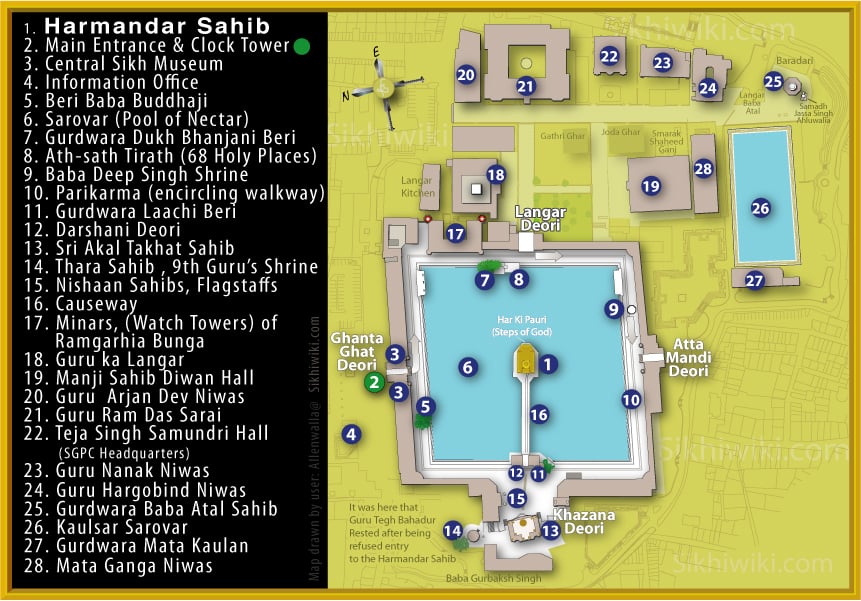
click on the plan to enlarge (by user:allenwalla)
The Golden Temple or Sri Harmandar Sahib is the most popular of all Sikh shrines. Sikh places of worship or Sikh shrines are called Gurdwaras. The Sri Harmandar Sahib is located in Amritsar in Punjab, North India.
Over the years the city has come to be known by the name of the Holy pool in which the Harmandar Sahib stands. Located in the center of the huge "Amritsar" (the pool of nectar) the Harmandar (sanctum sanctorum) symbolizes the synthesis of nirgun and sargun (the spiritual and temporal realms of human existence) for the Sikhs.
The "Mandar" is reached by a causeway from the `swarg dwarn' or Darshini Deori (gateway). .....More
Contents: Top 100. 110. 120. 130. 140. 150. 160. 170. 180. 190.
175
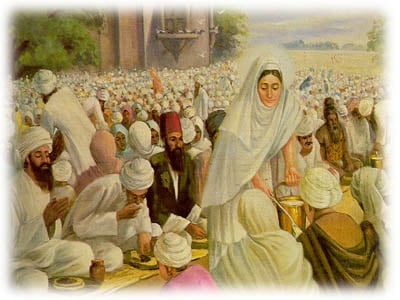
Mata Khivi (1506 - 1582) was born in 1506 to Karan Devi and Bhai Devi Chand Khatri in a small town called Sanghar which is now located in the province of Sindh in Pakistan.
Her father was a shopkeeper and trader, and was a popular man in the neighbourhood. His daughter inherited all his finest attributes of generosity and congenial spirit.
She was married in 1519, when she was 13 years old. Khivi was married to Lahina for 20 years before he became the second Guru of the Sikhs.
There is historical evidence that she had 4 children. Dasu, the eldest was born in 1524. Bibi Amro was born in 1532, followed by Bibi Anokhi in 1535 and son Datu in 1537. The family was content and doing well. As the wife of one of the town's richest men, Khivi must have enjoyed a great deal of respect. Her life was one of luxury and pleasure. .....More
Contents: Top 100. 110. 120. 130. 140. 150. 160. 170. 180. 190.
176
"Without compassion there is no religion" is a central belief of the Sikhs.
The sanctity of this world is held in place by dharam (path of righteousness) which in turn is a product of compassion or daya. Without compassion, this world would turn into hell and neither justice nor righteousness could be found anywhere. The Sikhs consider the Guru a divine spirit which can guide and provide instructions on how to become a better person and a useful member of the sane and saintly society.
In the Guru Granth Sahib, the "holy book" of Sikhism, is found the following Shabad or sacred verse:
| ਧੌਲੁ ਧਰਮੁ ਦਇਆ ਕਾ ਪੂਤੁ ॥ |
| Ḏẖoul ḏẖaram ḏaiā kā pūṯ. |
| The mythological bull Dharma is the son of compassion;
ਸੰਤੋਖੁ ਥਾਪਿ ਰਖਿਆ ਜਿਨਿ ਸੂਤਿ ॥ ਜੇ ਕੋ ਬੁਝੈ ਹੋਵੈ ਸਚਿਆਰੁ ॥ |
Contents: Top 100. 110. 120. 130. 140. 150. 160. 170. 180. 190.
177
Sheikh Fariduddin ‘Shakar ganj’ (1173 to 1265) popularly known as Baba Farid, or Baba Sheikh Farid Ganj-i-Shakar is regarded as the prime mystic–poet of the Punjabi language.
"Baba Sheikh Farid Ganj-i-Shakar" is not a ‘baptised’ name, but a galaxy of venerable modes of address with which Farid-ud-Din; who used Masud as his pen-name, began to be adored after his death by his devotees.
With Baba Farid a new star blazed on the horizon of greater Punjab. By his mellifluous poetry he conferred an independent status upon Punjabi, especially in his doha format. Baba Farid’s dohas in inspiringly sweet poetry are highly revered and forever enshrined in the Guru Granth Sahib.
Khaliq Ahmad Nizami, Professor of History, Muslim University, Aligarh, in his well documented book, The Life and Times of Slwikh Farid-ud-Din Ganj-i-Shakar (1955) provides comprehensive-information about Shaikh Farid.
Farid-ud-Din’s grandfather was a part of the exodus, of scholars, artisans and of other such careerists who ‘considered it expedient to migrate to Northern India from Kabul when Afghanistan was trampled by hordes of Mughals during the eleventh century. The Mughals were given to mass plunder, carnage and arson leading to vandalism. .....More
Contents: Top 100. 110. 120. 130. 140. 150. 160. 170. 180. 190.
178
The tercentenary celebration of the Guruship of Sri Guru Granth Sahib is to be undertaken on a massive scale in October 2008 at Takhat Sachkhand Shri Hazur Abchalnagar Sahib in Nanded, Maharashtra, India. The historic town of Nanded is an important place in Sikhi because it is where in October 1708, Guru Gobind Singh ended the chain of human Guruship and endowed the spiritual throne to the Holy Granth. The town is also important as Takht Sri Hazur Sahib, one of the five temporal thrones or seats of authority is located here. This is where Guru Gobind Singh, the Tenth Teacher, is known to have meditated on the banks of river Godavari and where he spent his final days.
Many other Gurdwaras worldwide will also be celebrating this important milestone in Sikh history with their own special events and festivities. The main Sikh Gurdwara situated in Nanded where the tenth Guru handed over the Guruship to the Guru Granth Sahib is undergoing a huge rebuilding exercise to facilitate the large inflow of pilgrims for this rare, hugely important and once-in-a-lifetime occasion for the Sikhs and also for the whole of the world. Many new facilities are being created to cater for this unprecedented occasion.
This event is of great relevance to the worldwide Sikh Community and will involve the remembrance of the 300th years of consecration of Guru Granth Sahib as the final and perpetual Guru of Sikhs as ordained by Guru Gobind Singh in 1708. .....More
Contents: Top 100. 110. 120. 130. 140. 150. 160. 170. 180. 190.
179
The history of the Sikhs in East Africa begins with the building of the railways in about 1890. The pioneers who were brought over from India to build the old Uganda Railways were skilled workmen - carpenters, blacksmiths and masons. They were quick to adept to the specialised requirements of their new surroundings and many became fitters, turners and boiler-makers.
These early Sikhs were soon joined by their educated brothers. Eventually, there was no department within the pioneering Railway industry without Sikhs. A number of policemen, ranging from inspectors to constables, were also sent from India to become the vital instrument of maintaining law and order. They remained in the country for several years.
Many, but not all, of the original Sikh pioneers returned to India to be replaced and augmented by others who came of their own choice. Their skills and industry were always in great demand. As Sikhs began to settle in their adopted country a sense of community was imbued by the building of Gurdwaras in all areas of the country where there was a significant number of Sikhs. .....More
Contents: Top 100. 110. 120. 130. 140. 150. 160. 170. 180. 190.
180
Bhai Himmat Singh (18 January 1661- 7 December 1705), was one of the original Panj Piare (the Five Beloved) the first five Singhs to be initiated into the Khalsa way of life.
He was born on 18 January 1661 at Jagannath in a "low-caste" family of water suppliers. He came to Anandpur at the young age of 17, and attached himself to the service of Guru Gobind Singh.
Before initiation, he was called 'Bhai Himmat'. He was one of the initial five Sikhs who one by one offered to lay down their heads in response to the Guru's successive calls made at an assembly of the Sikhs especially summoned on the occasion of Baisakhi of 1756 Bk corresponding to 14 April, 1699.
He along with the other four received the vows of the Khalsa at Guru Gobind Singh's hands and was given the name Himmat Singh.
Bhai Himmat Singh proved himself to be a brave warrior and while at Anandpur, he took part in battles with the surrounding hill chiefs and imperial commanders. He died in the battle of Chamkaur on 7 December 1705 together with Bhai Sahib Singh and Bhai Mukham Singh also members of the historic Panj Pyares. .....More
Contents: Top 100. 110. 120. 130. 140. 150. 160. 170. 180. 190.
181
I am President and Vice-Chancellor, Thompson Rivers University, Kamloops, British Columbia, Canada. In December 2004 my wife and I visited India for the first time.
During that trip, most of which was in Punjab, I noticed that almost everyone wore bangles. I asked my host, Mr. Ron Mundi, about his bangle and he told me the religious reason that Sikhs wore the kara. He also mentioned that he attributed his recent good fortune and good luck to wearing it. Several days later, our group travelled to Amritsar to visit the Golden Temple.
While there, I purchased a simple kara for my right wrist. It was my intention to wear it for awhile and then take it off when I returned to Canada several weeks later.
On December 24, 2004 my wife and I flew from Delhi to Krabi, Thailand. We spent Christmas Day snorkelling offshore on an island in the Andaman Sea. .....More
Contents: Top 100. 110. 120. 130. 140. 150. 160. 170. 180. 190.
182
Salok Mahala 9 are the saloks (type of Gurbani composition) by the ninth Sikh Guru, Guru Tegh Bahadur which form the concluding portion of the Guru Granth Sahib.
They precede Guru Arjan's Mundavani and appear from page 1426 to 1429 of the Sikh holy Granth. This composition consists of 57 (fifty seven) saloks and spans just 4 pages of the holy Granth.
Each salok is a couplet consisting of 2 lines. This Bani was incorporated into the Guru Granth Sahib by Guru Gobind Singh, the last human Guru of the Sikhs. As is commonly believed, they were composed by Guru Teg Bahadur while in the 'Kotwali' (prison) at Chandni Chowk, Delhi, before he achieved martyrdom.
These saloks form an important part of the epilogue when bringing to a close the reading of the Guru Granth Sahib (Bhog) on a religious or social occasion and should thus be the most familiar fragment of it, after the Japji Sahib, the Sikhs' morning prayer.
Salok, in Sanskrit, signifies a verse of laudation or praise. In Hindi and Punjabi, it has come to imply a couplet with a moral or devotional content. .....More
Contents: Top 100. 110. 120. 130. 140. 150. 160. 170. 180. 190.
183
Meditation is any practice whose goal is attaining a state of higher consciousness. It is the process of retraining our awareness to operate not from the conscious or subconscious level, but from the level of the super-conscious.
Guru Amar Das warns us about our attachment to material things thus: "The three qualities hold people in attachment to Maya. The Gurmukh attains the fourth state of higher consciousness." (SGGS p30).
To attain this higher level of consciousness, one has to disengage the mind away from mundane interactions and join it to a much higher level of awareness.
When considering awareness, it is clear that man is more aware of his surrounding than animals. Man is conscious of his parents, grand-parents and other relatives while animals in general may not be so conscious about some of the complex relations that they may have.
Most animals’ behaviour is driven by their immediate sensory needs while most human behaviour is driven by etiquette and social norms rather than sensory demands. The concept of correctness and fairness has crept in - this can be termed 'consciousness'. .....More
Contents: Top 100. 110. 120. 130. 140. 150. 160. 170. 180. 190.
184
There are 134 Shabads (hymns) of Sheikh Farid incorporated in the Guru Granth Sahib.
Many Sikh scholars ascribe them to Farid Shakarganj (1173 – 1265) of Pak Pattan, a disciple of the Sufi Qutbuddin Bakhtiyar Kaki.
The tenth in succession to his post was Shaikh Brahm (Ibrahim), also known as Farid Sani or Farid the 2nd, and it is this Farid who Guru Nanak Dev met on two occasions.
Baba Farid is recognised as the first major poet of the Punjabi language and in recognition of his exalted status, the district of Faridkot in Punjab, northern India is named after him. Baba ji was a Muslim with a predominantly Sufi background.
Farid ji has been honoured by the Gurus of Sikhism and his verses were collected and subsequently compiled into the Sikh holy book, Guru Granth Sahib (normally referred to as Gurbani) under three different sections as detailed below:-
First section: The first section consists of two shabads in Raag Asa at page 488 in the Guru Granth Sahib. The Bani starts " Aasaa, The Word Of Shaykh Fareed Jee:" "They alone are true, whose love for God is deep and heart-felt." .....More
Contents: Top 100. 110. 120. 130. 140. 150. 160. 170. 180. 190.
185
- ਤਿਥੈ ਖੰਡ ਮੰਡਲ ਵਰਭੰਡ ॥ ਜੇ ਕੋ ਕਥੈ ਤ ਅੰਤ ਨ ਅੰਤ ॥
- "There are planets, solar systems and galaxies.
If one speaks of them, there is no limit and no end."
The Sikh scriptures have said great many things about the Universe.
However, although Gurbani has been in existence since about 1499 and the Guru Granth Sahib has been the Guru of the Sikh since 1708, the world has not been listening.
It is clear that there is very little that the world has learnt from the important points mentioned in the Sikh holy text regarding the cosmos.
Carl Sagan (1934 – 1996) was an American astronomer, astrochemist, author, and highly successful popularizer of astronomy, astrophysics and other natural sciences. He was the David Duncan Professor of Astronomy and Space Sciences and Director of the Laboratory for Planetary Studies at Cornell University. He was a consultant and adviser to NASA since the 1950's and briefed the Apollo astronauts before their flights to the Moon. .....More
Contents: Top 100. 110. 120. 130. 140. 150. 160. 170. 180. 190.
186
The Sikh holy scriptures are perhaps the most recent historic religious text that can be rightly categorised as having 'inter-faith' and 'multi-faith' dimensions from inception.
The Sikh scriptures are unique among the religious "Holy Books" of the world in that they don't just offer spiritual guidance for their own adherents alone but impart guidance and assistance for all the peoples and religious factions of the world.
Many world renowned scholars have recognised the Siri Guru Granth as a supreme treasure for all of mankind. It is accepted by all that the Granth is the true and permanent spiritual guide of the Sikhs; but it has not as yet been generally recognised that it is also a true spiritual guide for all of humanity. Guru Granth Sahib transcends creed and caste, cant and convention. It does not belong to the Sikhs alone.
Considering Islam in particular, perhaps no other historical Islamic verse holds such strong contempt for Muslims who fail to carry out the daily Nimaz as can be attributed to Hazrat Baba Sheikh Farid as recorded in the Shri Guru Granth Sahib. Baba Farid ji was a Muslim whose many verses are preserved only in the holy Granth and cannot be found elsewhere. He was an enlightened soul from the Almighty Lord who left a common message for everyone to learn from. .....More
Contents: Top 100. 110. 120. 130. 140. 150. 160. 170. 180. 190.
187
Originality and clarity of the Sikh faith was instrumental in promoting it from its inception in about 1499 and the voluntary adoption by the masses with eagerness and whole-heartedness.
Equality, non-discrimination, true justice, and worship of only One God, are basic values that are well-known and gave the world a simple and universal faith.
Today, some 540 years after the birth of the founder of Sikhi, Guru Nanak, it has more than twenty two million followers, and is the fifth largest faith in the world.
Sikhi is respected world over and is known as a religion of peace and unity of mankind. The Sikhs have only fought wars to defend themselves or others but are probably the only section of society that have never fought wars as aggressors.
For the Gurus promoted all human beings as one and the same, and they are all above discrimination. The Gurus showed real love for all of humanity. Muslims were equally dear to them as Hindus, or any others. It is well known that Bhai Mardana a Muslim, spent his whole adult life with Guru Nanak, accompanying Guru with his Rabab as a musician and the Guru's closest companion everywhere that the Guru went. .....More
Contents: Top 100. 110. 120. 130. 140. 150. 160. 170. 180. 190.
188
- "Consumed by greed the world is burning and dying; while burning, it cries in agony.
If it meets with the soothing Lord, it will not burn any more.
O Nanak, without Naam and without contemplating the Word, one cannot become fearless." (SGGS p588)
We find today the whole world burning in the fire of greed and hatred. Everyday we read the reports of bloodshed and the loss of innocent lives.
There are some people in the world committing suicide to kill their opponents. So the cycle of revenge escalating evermore on a daily basis.
The circle of casualty is increasing daily and it is coming in our direction. One day, it will hit us! What then?
Knowing this, still most people are too involved in their own everyday little problems and daily struggles to even take a few minutes to stop and think. You probably are thinking right now to stop reading this article. You are thinking I have many other things to do. I need to do X then Y then Z; I will read this later when I have finished X, Y and Z. Right!
Well, that is how the world has got into this diabolical state. .....More
Contents: Top 100. 110. 120. 130. 140. 150. 160. 170. 180. 190.
189
Gurdwara Pathar Sahib, is a beautiful Gurudwara sahib constructed in the memory of Guru Nanak, about 25 miles away from Leh, on the Leh-Kargil road, 12000 ft above sea level.
The Gurdwara was built in 1517 to commemorate the visit to the Ladakh region of Guru Nanak Dev, the founder Guru of the Sikh faith.
During his lifetime Guru Nanak travelled to many distant places and one such place was Tibet. Guru Nanak is well respected by Tibetan Buddhists who consider him a saint; The Dalai Lama, spiritual leader of Buddhists in Tibet, has confirmed this in his discussions with some Sikh leaders saying that Tibetans revere Guru Nanak as a Buddhist saint under the name of Guru Gompka Maharaj.
Discovery: In the late 1970s, during the construction of the Leh-Nimu road, a large boulder was found by Lamas in the middle of the road bed covered with Buddhists prayer flags. .....More
Contents: Top 100. 110. 120. 130. 140. 150. 160. 170. 180. 190.
190
- "In this dark era of Kalyug, the singing of Kirtan is king,
the Gurmukhs sing it with their minds focused.
you save yourself and all your clan and go to the Lord's Court with honour. (6)" (SGGS p1075)
In this Shabad on page 1075 of the Sikh holy Granth, the fifth Sikh master, Guru Arjan Dev tells how important it is to sing Kirtan in this age of Kaljug. Kirtan is the singing of the Lord's praises with the accompaniment of musical instruments.
The Sikhs regard the Guru Granth Sahib as their perpetual spiritual guide. At the same time, it is a holy Scripture for all mankind that embodies the revealed truth applicable to all the human race. The holy Granth enshrines the wisdom of many spiritual masters of the East and is the most recent endeavour to allow us to experience the Divine.
Although Kirtan refers to any singing of the Lord's praise, for the Sikhs, it is the singing of hymns (Shabads) from their holy Scriptures. .....More
Contents: Top 100. 110. 120. 130. 140. 150. 160. 170. 180. 190.
191
A close friend of mine, Professor Jap Singh, a professor at a Ludhiana university, narrated this episode to me about two decades ago. I repeat below what my friend described to me:
Professor: "You know, I contribute regularly for gurdwara (Sikh temple) functions. One year, special Gurpurb celebrations were arranged by the campus residents of the Panjab Agriculture University, Ludhiana.
The organisers as usual visited me for my contribution. I usually gave 25 rupees every time they came for collection. They told me, “This will be a special function, we want a bigger contributions from you this time, Professor. Mr. ABC (a clerk) paid 20 rupees.”
I took this as a signal for me to double my contribution. However, keeping my recent promotion and position at the University in mind, I contributed one hundred rupees. The members were very pleased since they expected only 50 rupees.
When the organisers left, my ego overtook me, “Look! I am a great Sikh. This contribution will draw God’s attention and He will give me special rewards for this donation.”
On the day of the special Gurpurb, I deeply regret and am embarrassed to tell you (I know you won’t reveal my name to others) what went through my mind. When I went through the aisle to pay my respect to the Guru Granth Sahib, I could not help looking at the Sangat already sitting there.
Drenched in my ego, I said to myself, “This person would have paid only five rupees; this teacher might have given ten rupees; .....More
Contents: Top 100. 110. 120. 130. 140. 150. 160. 170. 180. 190.
192
The Komagata Maru was a Japanese steam liner, that was chartered by an affluent businessman, Gurdit Singh, to bring Indian immigrants to Canada in 1914.
It began its journey from Hong Kong, sailed to Shanghai, China, then to Yokohama, Japan, and then on to Vancouver, British Columbia Canada where it arrived in Burrard Inlet, near Vancouver, on May 23. This journey took place in 1914, carrying 376 passengers from Punjab, India.
During the period before 1920's the whole of North America has a policy of discrimination against coloured races which was thinly disguised to appear as something else. The dominate white governments of USA and Canada were determined not to allow the flow of Asians, whether so called 'yellow', 'brown' or 'black' immigrants. In the year 1900 the census reported 2050 people from India on the North American continent.
The majority of these Indians were Punjabis who had settled in Canada in the hope of finding work so that they could improve their economic situation from what it had been in the Punjab. .....More
Contents: Top 100. 110. 120. 130. 140. 150. 160. 170. 180. 190.
193
Harshdeep Kaur (born December 16, 1986) is a popular playback singer in India. Harshdeep was born in a Sikh family in Delhi and inherited her music from her father, Savinder Singh, who owns a factory which makes musical instruments. Apart from studying, she started learning music at the tender age of six.
She and her family are committed Sikhs and her presence on the Lux Junoon show in 2008 wearing a turban which is an important symbol of Sikhism was appreciated by millions of people across the globe. Also she was faithfully support throughout the many shows in the contest by both her parents; her father wearing the customary turban and long kesh as ordained by the tenth Sikh master, Guru Gobind Singh.
She learnt Indian Classical Music from Shri Tejpal Singh, popularly known as the Singh Brothers, and western Classical Music from George Pullinkala at the Delhi Music Theatre.
Contents: Top 100. 110. 120. 130. 140. 150. 160. 170. 180. 190.
194
The Sikh organisation, UNITED SIKHS launched the "Feed the Hungry" campaign back in February 2009. This campaign brought winter solace to many homeless in Toronto, Canada.
Like other Sikh bodies, this step follows the tradition of Langar (serving of free food) which was first introduced by the founder of Sikhism, Guru Nanak during the late 1400's.
"Under the "Feed the Hungry" campaign, UNITED SIKHS will work with locally based Gurdwaras (Sikh place of worship), to feed and clothe the needy from all communities around the world. To date 10 Gurdwaras in Ontario have agreed to participate in this campaign," said Charankamal Singh, Sikh Aid Director of UNITED SIKHS (Canada). This is just the beginning. It is hoped that many such hundreds of projects will be initiated all over the world with the many thousands of Gurdwaras around the world taking part.
On the crisp cold morning of 20th February, 2009 the Parkdale Recreation Centre of downtown Toronto was filled with sewadars (volunteers) wearing a dastaar (a Sikh turban), who were serving hot-meals, beverages and distributing warm clothes. .....More
Contents: Top 100. 110. 120. 130. 140. 150. 160. 170. 180. 190.
195
Guru Tegh Bahadur Ji (Gurmukhi: ਗੁਰੂ ਤੇਗ ਬਹਾਦੁਰ) (April 18, 1621 - November 24, 1675) was the ninth of the Ten Gurus of Sikhism and became Guru on September 16, 1665 following in the footsteps of his grand-nephew, Guru Har Krishan.
Before Guru ji left his body, he nominated his son, Gobind Rai – who later in 1699 was given the name - Guru Gobind Singh, as the next and as he turned out the last Guru of the Sikhs – in human form.
The following is a summary of the main highlights of Guru Tegh Bahadur's life:
- built the city of Anandpur Sahib
- toured various parts of India
- responsible for saving the Kashmiri Hindus who were being persecuted by the Mughals, laying down his own life.
- contributed 115 hymns to the Sri Guru Granth Sahib, all of them Sloks.
- The Saloks (Mahal 9) near the end of the Guru Granth Sahib are extremely popular.
- Guruji martyred in Delhi by Mughal Emperor, Aurangzeb.
- Gurdwara Sis Ganj, Chandani Chowk, Delhi, where he was beheaded and Gurdwara Rakab Ganj Sahib, Delhi, where at the residence of Lakhi Shah Vanjara - who burnt his house so as to cremate Guruji’s body. .....More
Contents: Top 100. 110. 120. 130. 140. 150. 160. 170. 180. 190.
196
Guru Nanak (1469-1539) promulgated a unique and universal philosophy of humanism in the Indian sub-continent as the renaissance was taking place in Europe (14th to 16th centuries) and scientists were challenging illogical religious concepts and beliefs.
The Guru carried his message far and wide to South Asia and the Middle East. He held discussions with religious leaders: Hindus—(Brahmans, Sidhs and Jogis), Muslims—(Sufis, mullahs and Qazis), Jains and Buddhists in India, the Middle East, Tibet and Ceylon (Sri Lanka), etc
During his travels (odysseys, Udasis) Guru Nanak challenged the ancient mythology, wrong religious concepts and rituals with which the peoples of South Asia and Middle East were shackled for centuries. People were unable to express their freewill in any aspect of their lives because their lives were controlled by their religious and political authorities.
Guru Nanak launched his movement to liberate the masses form ignorance and religious and political tyranny. His philosophy, termed as ”Nanakian Philosophy‘, is embodied in his Bani (Word), which has been incorporated in the Aad Guru Granth Sahib (AGGS). .....More
Contents: Top 100. 110. 120. 130. 140. 150. 160. 170. 180. 190.
197
Guru Nanak, the founder of the Sikh religion, like the Buddha earlier, sowed the seeds of spiritual democracy.
The process of its germination and growth is still in progress and continues to flourish due to the Guru's message for the world at large, conveyed through his writings and personal visits to the then known countries of the Asian sub-continent.
This article examine the historical facts relating to Guru Nanak's visit to Sri Lanka. The Guru, possessing neither territory, nor wealth, nor aided by the forces of arms, preached his doctrine of peace in the countries during the course of his travels including Sri Lanka.
It is clear from recent research to conclude that much evidence, in both written and oral traditions, is available with regard to Guru Nanak's travels, beyond the limits of Hindustan (India), including Sri Lanka, then known as Simhal Dweepa, to spread his message of virtues and righteousness.
Matiakullam, a town in Sri Lanka, visited by Guru Nanak sahib and Bhai Mardana; at the time of the visit of the Guru, present-day Baticulla was known as Matiakullam. Raja Shiv Nabh ruled this area. .....More
Contents: Top 100. 110. 120. 130. 140. 150. 160. 170. 180. 190.
198
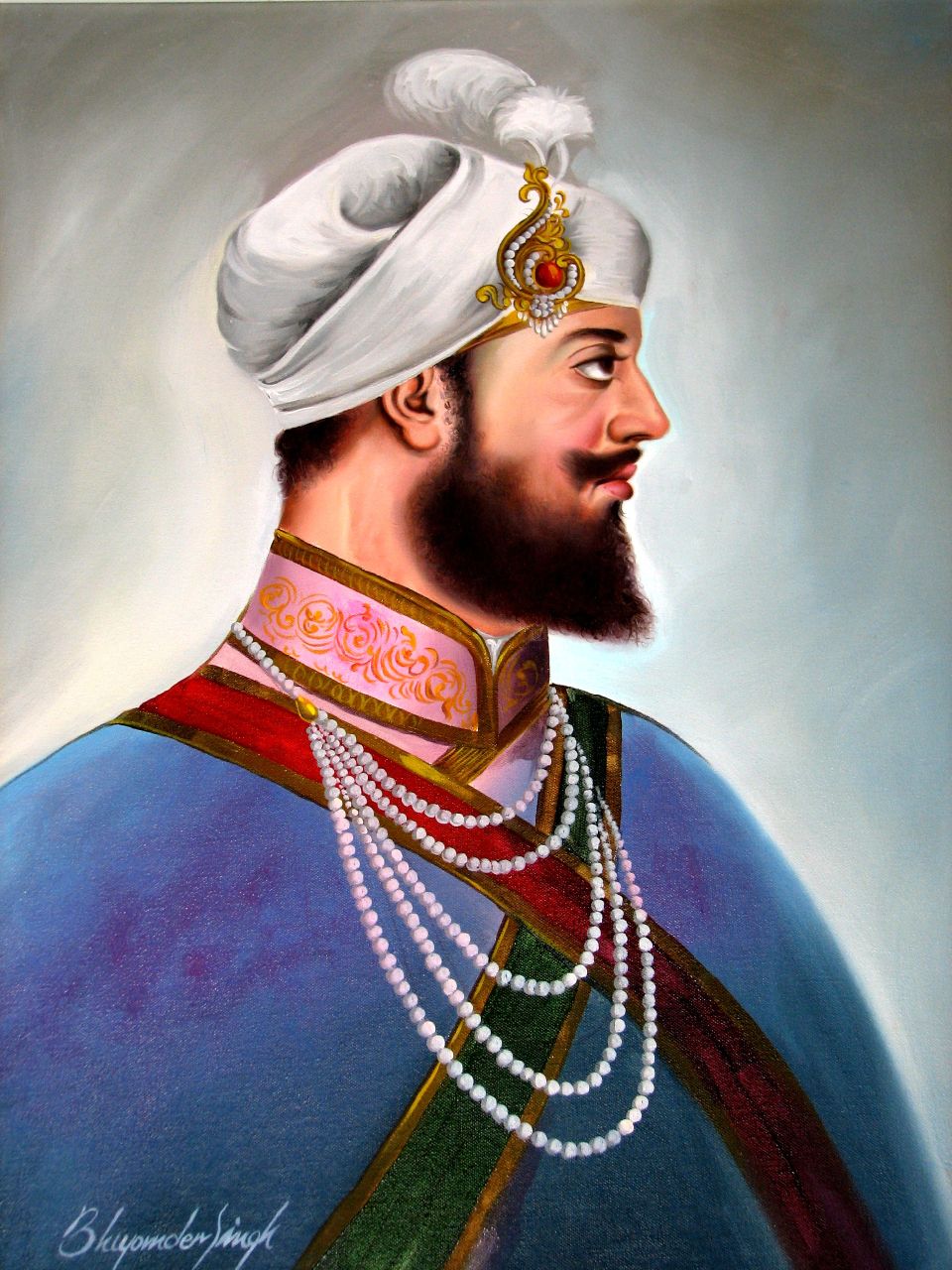
For many years now, the Sikh community worldwide has honoured the sixth Guru's vision of Miri and Piri, celebrating this vision on 21 July every year by calling this day, Miri Piri Divas.
Miri: This word has been derived from the Persian word - “miri”, which itself comes from the Arabic “amir” which literary means commander, governor, lord, prince, etc, and signifies temporal power, "political" or "material" power.
Piri: This word has also been derived from the Persian word - “pir” literary meaning saint, holy man, spiritual guide, senior person, head of a religious order and stands for spiritual power or moral authority. In Sikhi, the words miri and piri are frequently used together.
Miri Piri: The adoption of the term “miri piri” in the Sikh tradition has been made to connote the temporal and spiritual components of life; the materialist concept of human existence and the spiritual aspect of human life. .....More
Contents: Top 100. 110. 120. 130. 140. 150. 160. 170. 180. 190.
199
International Turban Day is celebrated on April 13th every year. This event was started in 2004 to bring awareness of the strict requirement on Sikhs to don the turban as a mandatory part of their religion.
In the West since 9/11 in 2001, the turban, has attracted negative attention due to the wrongful linking of this garment with Osama bin Laden, the Muslim leader of al Qaeda who has often been pictured wearing a turban.
Due to the vast news and media coverage of Osama bin Laden following 9/11, many men wearing a turban and beard and Punjabi styled clothing articles (long vest or longer shirt) have been looked upon with suspicion, with some innocent people even being killed or wounded by uninformed and even deranged westerners bent on revenge, who just assumed that any bearded man, wearing a turban and beard was a Muslim.
However, this perception is wrong, as the vast majority of people in Western countries who wear turbans are actually Sikhs. Given that many thousands of Sikhs died fighting against the same sort of Muslim fundamentalist terrorists that bin Laden's group al Qaeda and the Taleban espouse today, the irony of such an uninformed assumption is tragic, especially since most Muslims living in the West do not wear turbans. .....More
Contents: Top 100. 110. 120. 130. 140. 150. 160. 170. 180. 190.
